
On October 27, 1941 the Nazis and their helpers deport 1,040 men, women and children with Jewish roots from Berlin to Łódź, Poland. Among the deportees are Sybil and her mother Adelheid.
To the end...
In Sybil Morel‘s footsteps
I can better write about people, if I follow their traces.
That is why my former colleague Katarzyna Bareja and I are taking a trip following the last steps of Sybil's life: to the Łódź ghetto and to the Chelmno nad Nerem extermination camp.
Katarzyna is Polish and accompanies me as an interlocutor and interpreter on the 2,400 kilometer journey.
We will post our impressions promptly here and on Instagram.
Stay tuned!


07-14-22: Outward journey
We start at 4:30 a.m. in Tübingen. The journey goes via Stuttgart, Heilbronn, Nuremberg, Hof, Chemnitz, Dresden, Wroclaw.
4:28 p.m.: After about 12 hours of driving we safely arrive in Lodz and move into our hotel, right in the center, at Pietrowska 91. We hardly had any traffic jams and Katarzyna is a great driver.
After a short break we stroll along Pietrowska; a real boulevard with almost exclusively old buildings: restaurants, stores, on the upper floors apartments, many memorial plaques and some bronze sculptures that remind us of Poland's long and rich history.
I like the monument to Arthur Rubinstein best, one of the greatest pianists of the 20th century. He lived in Łódź for some time.
Among the people there is a party and after-work atmosphere, there is also street theater, among them young people on skateboards, inliners, electric scooters. Wow...
I am reminded of nights in Florence, that is how Italian the atmosphere strikes me.
Sybil never saw the beautiful Łódź:
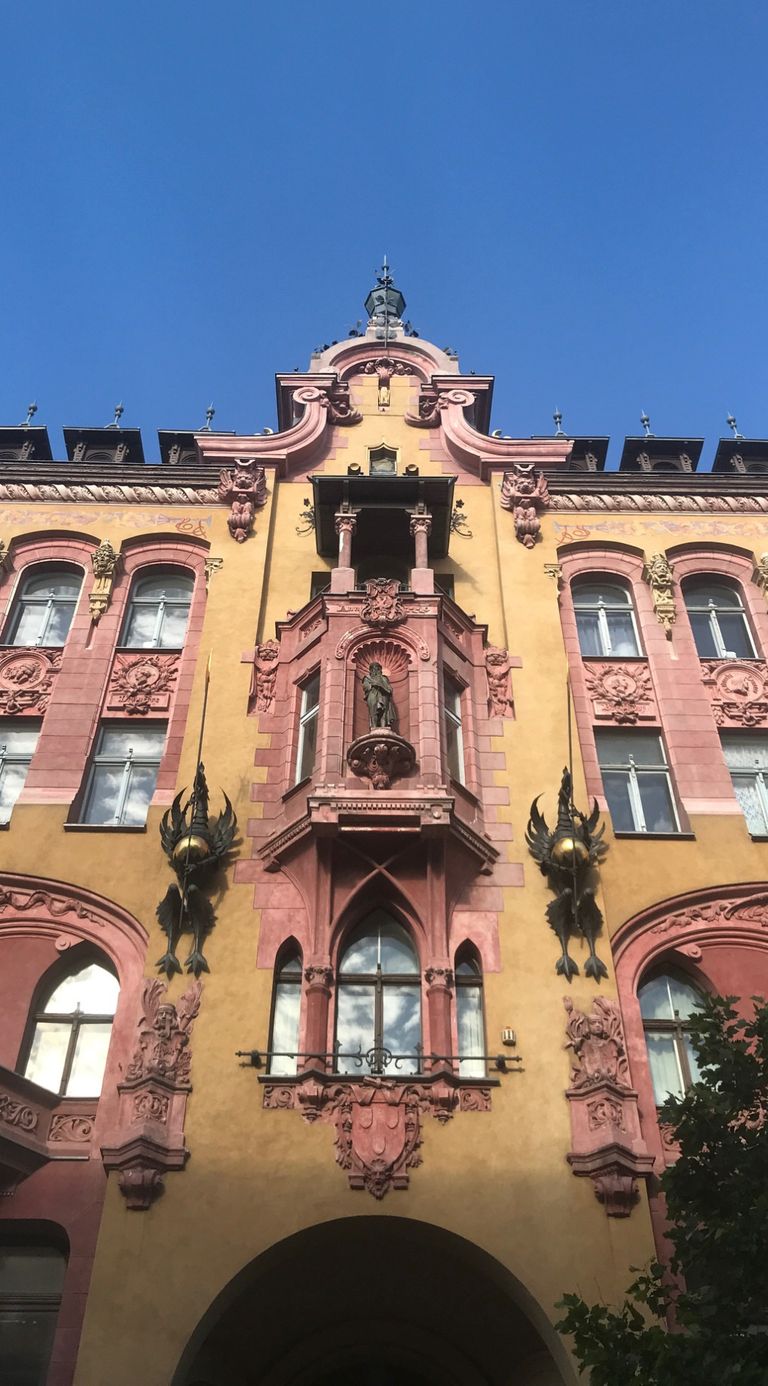
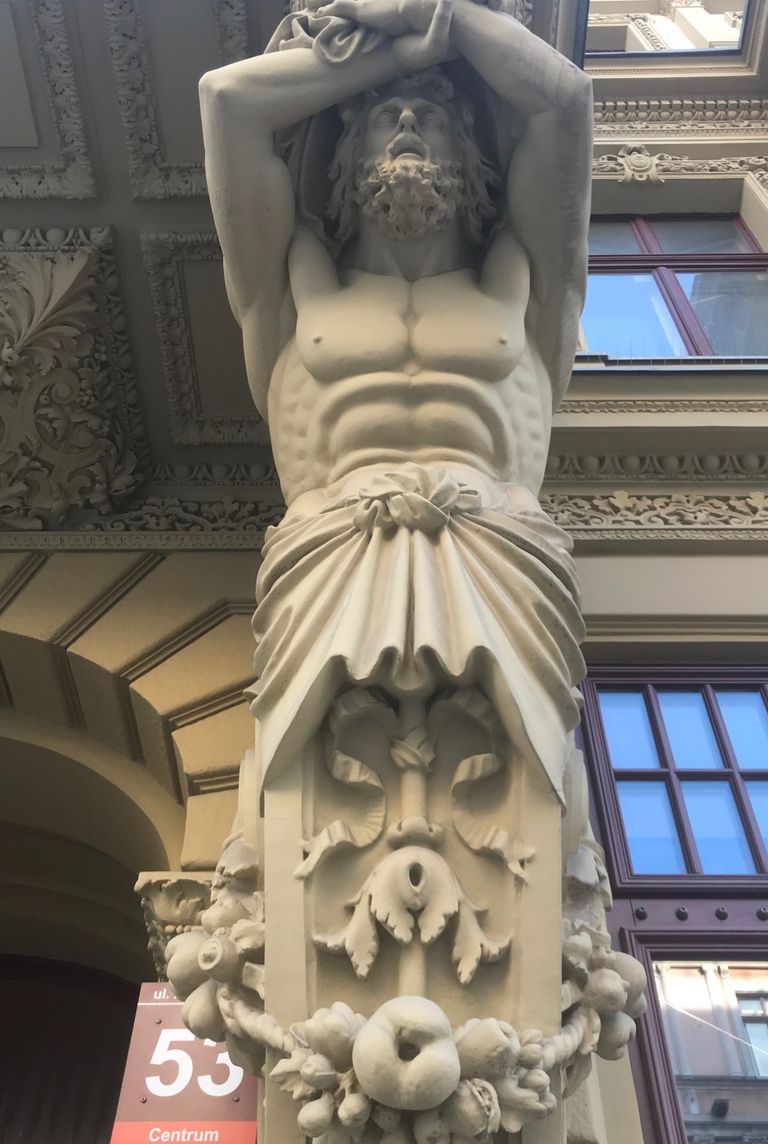
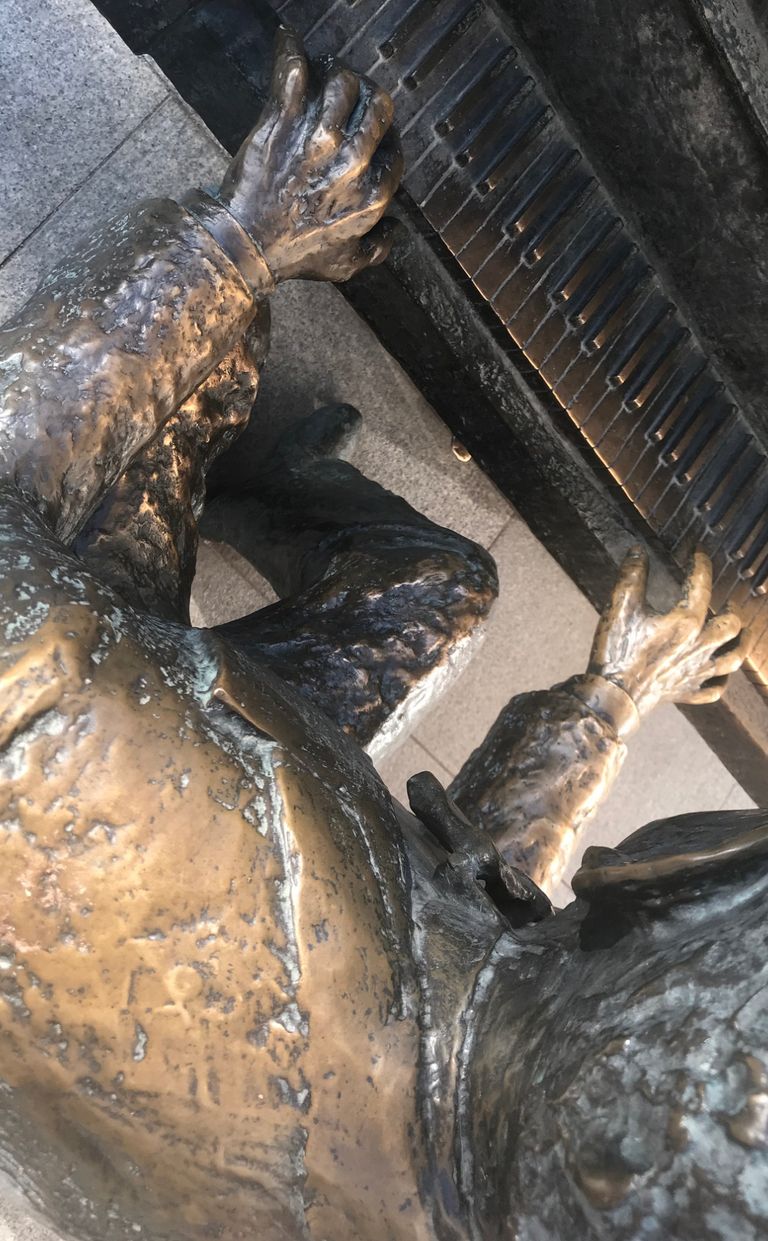
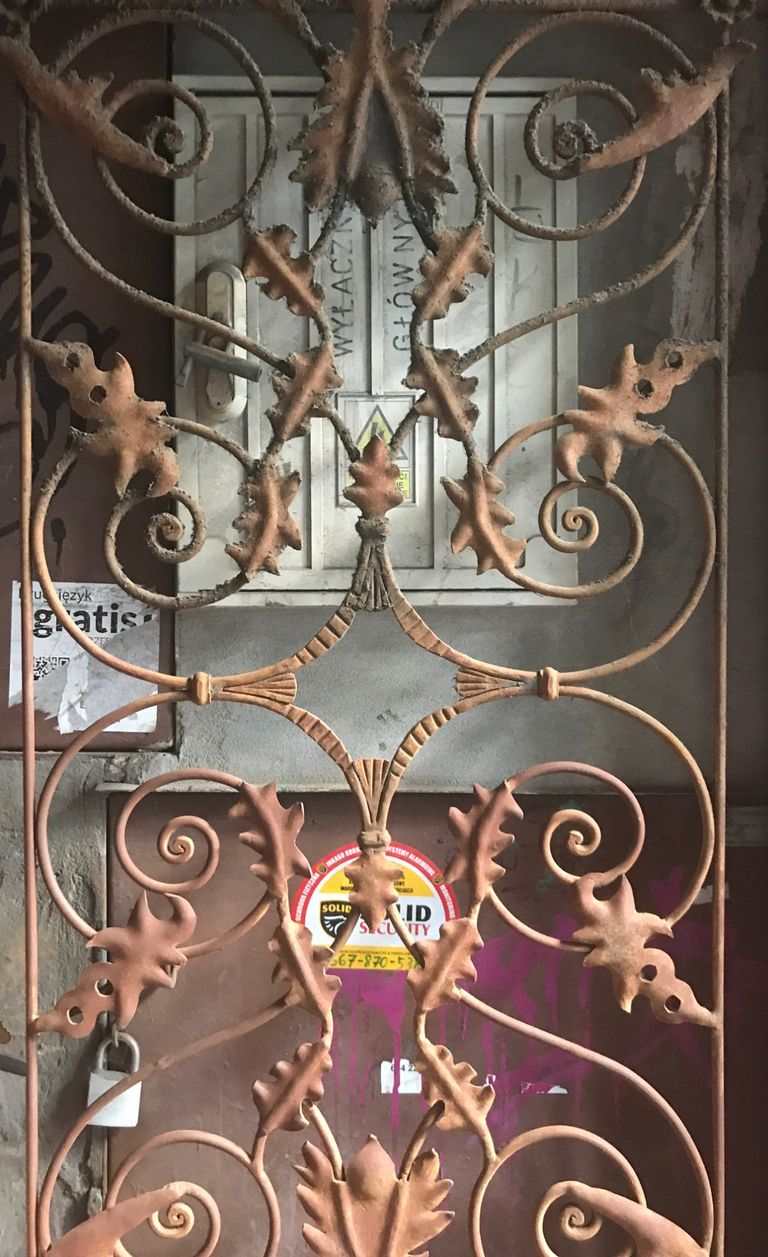
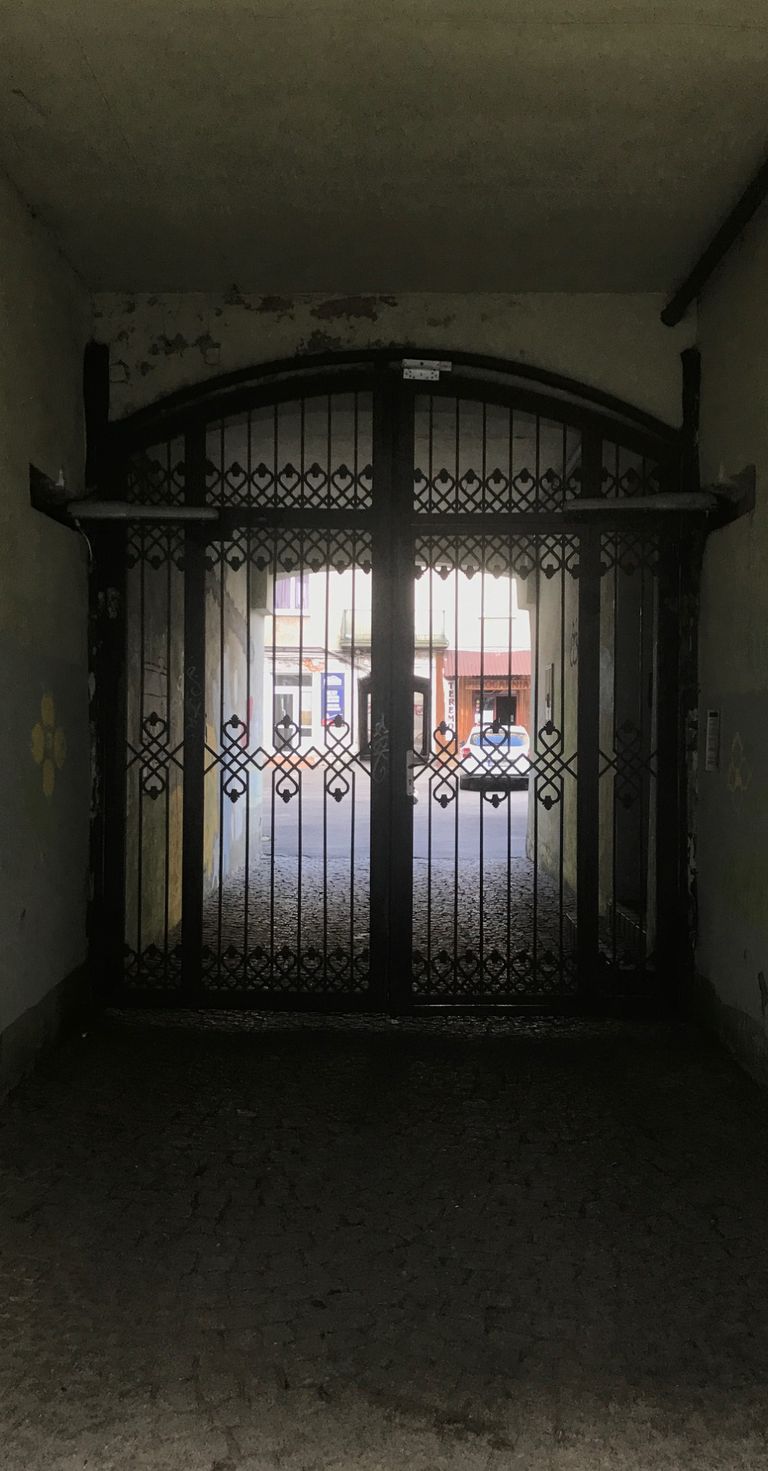
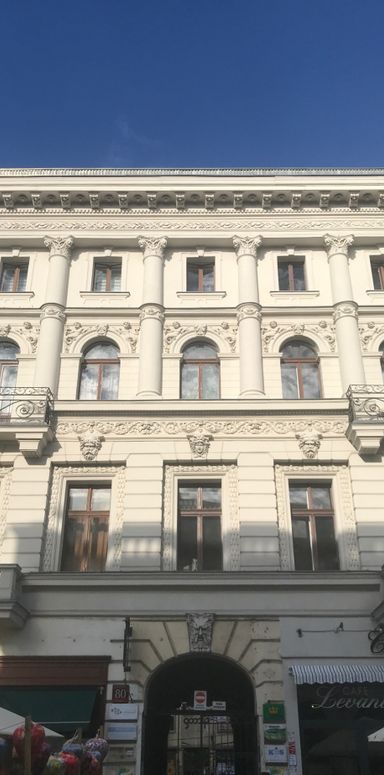
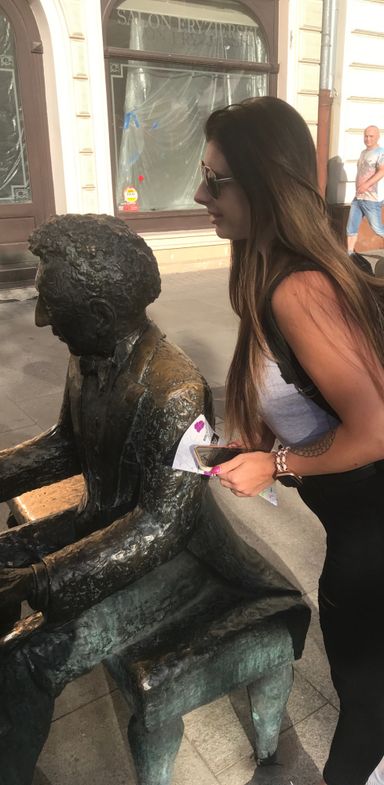
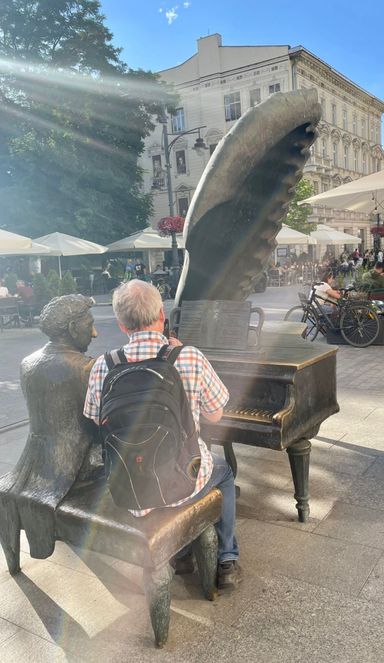
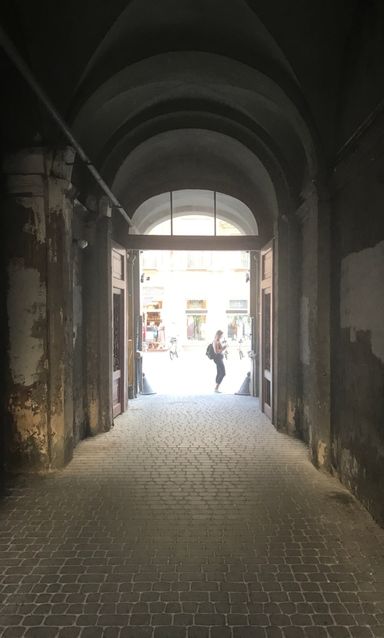
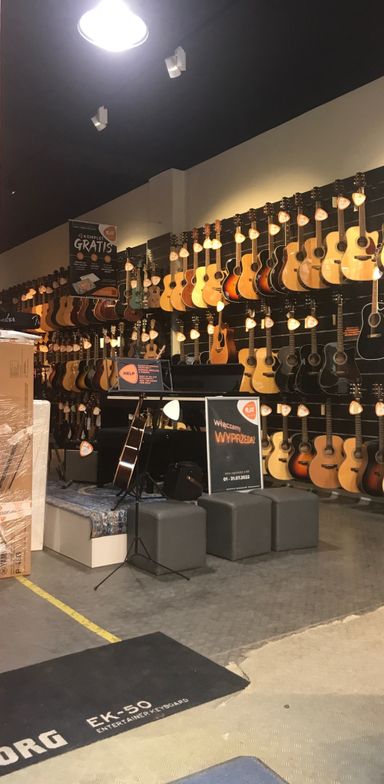
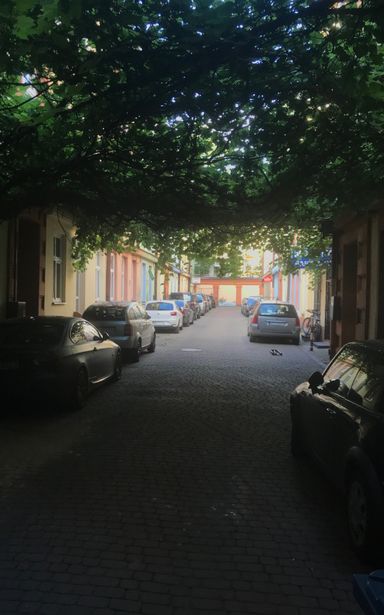
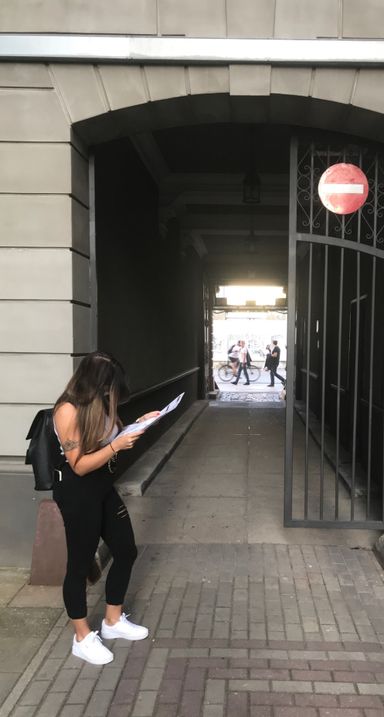
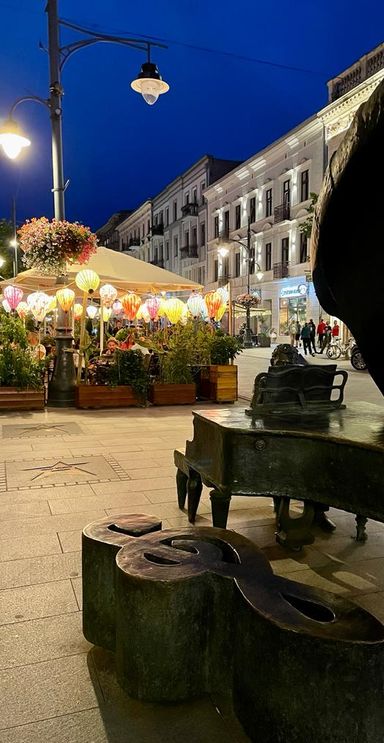
07-15-22: Ghetto Łódź
In September 1939 the 8th Army of the Wehrmacht marches into Łódź. As a visible sign of their rule, the occupiers give German names to all streets and squares. And they establish a ghetto, to which first the Jews of the city, then of surrounding areas and finally from Germany are deported.

On the way to the former Jewish ghetto.
On foot...
We come across beautiful things and things worth knowing about that we would not have discovered from a car or a streetcar:
House fronts covered entirely in glass mosaics.
A statue reminds us of Kata's favorite children's book author.
A high-rise building with a completely painted facade, one side.
A huge factory site where textiles were made in the 19th and 20th centuries.
Today the former factory building houses stores, cinemas, hotels, and restaurants.
Old and new go together. We can't help but be amazed at how imaginative urban planning can be.
Right next to it is the entrepreneur‘s the palace who owned the factories.
The palace has become a museum, and we couldn’t miss buying an entrance.
Again we are amazed: regarding the splendor and luxury we get to see.
And again Arthur Rubinstein: this time a cast of his hands.
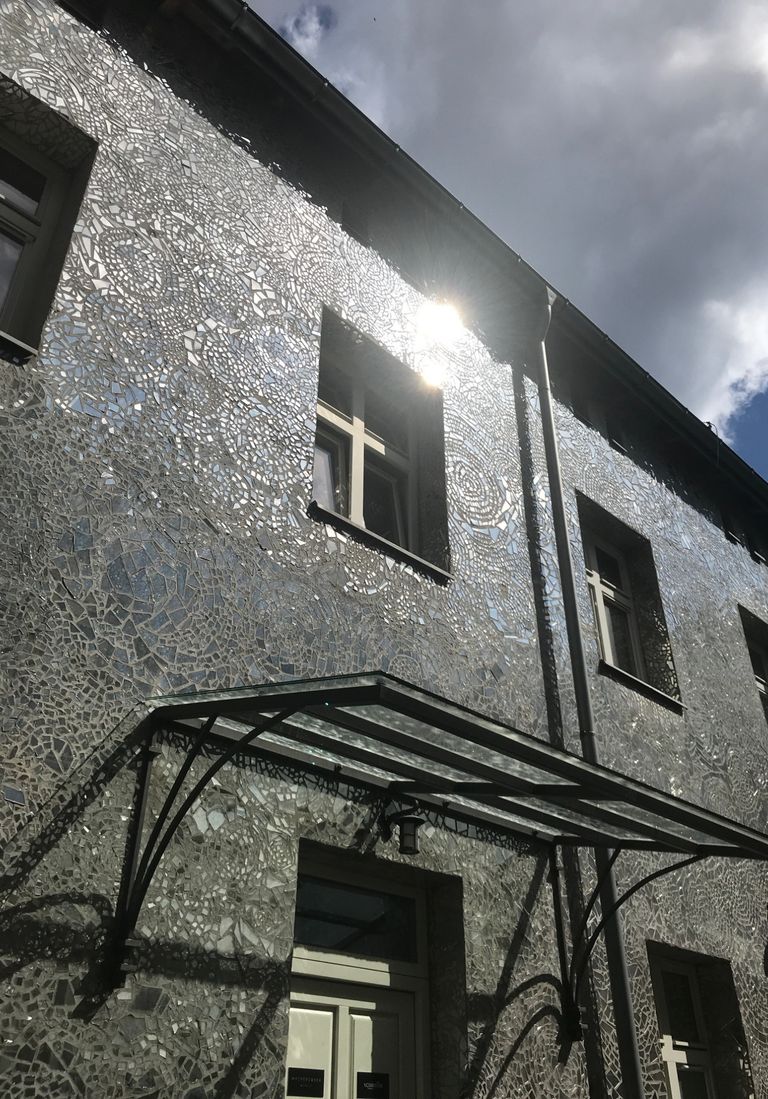
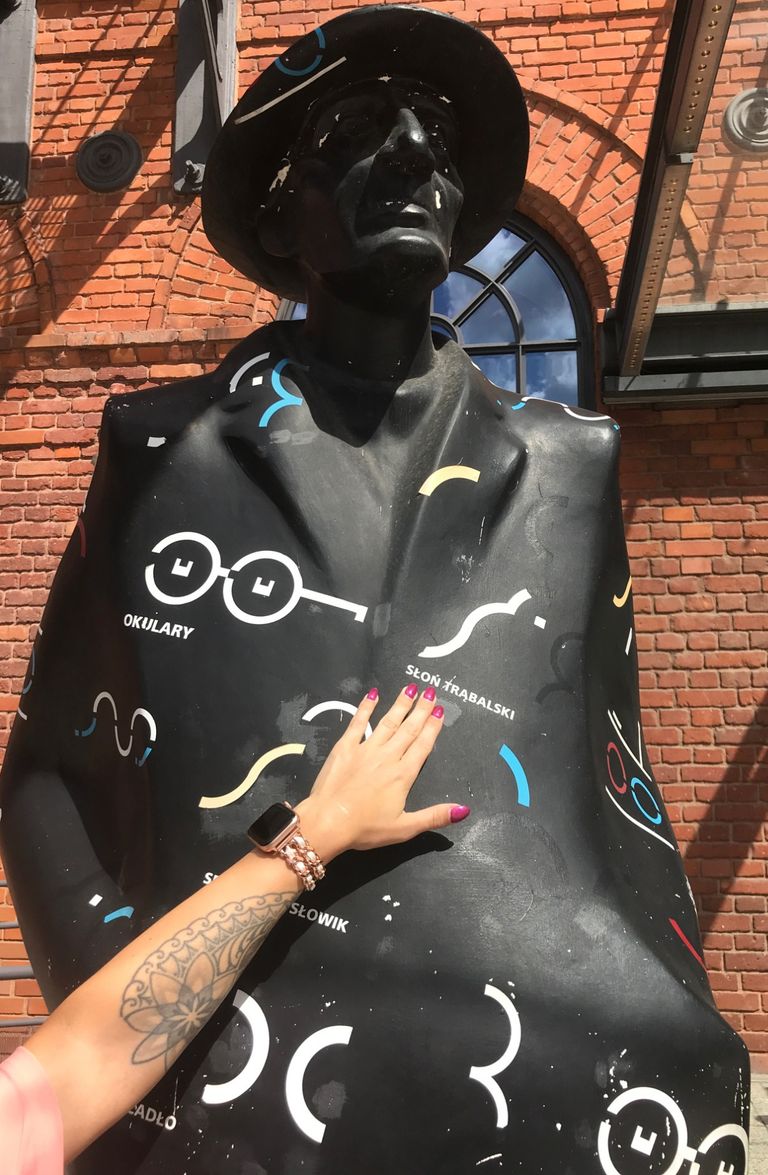
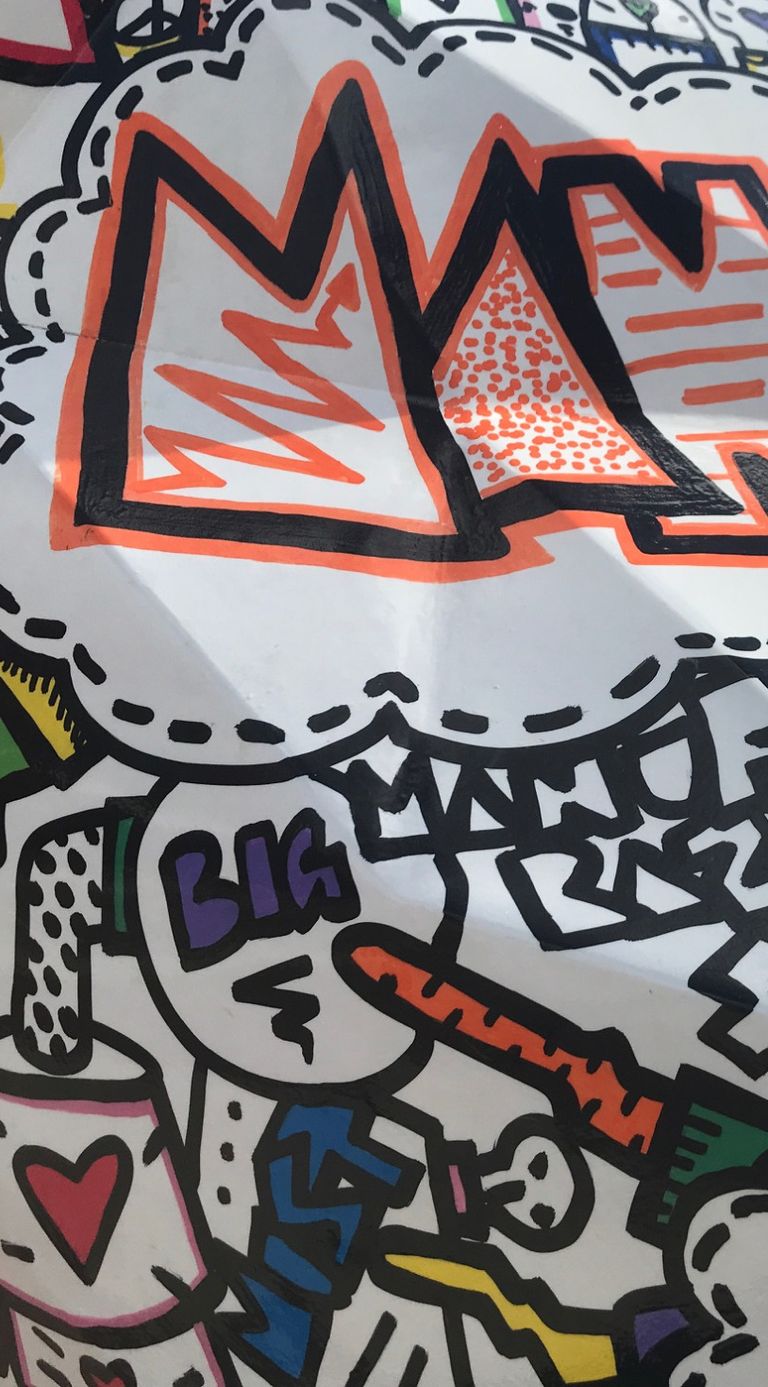
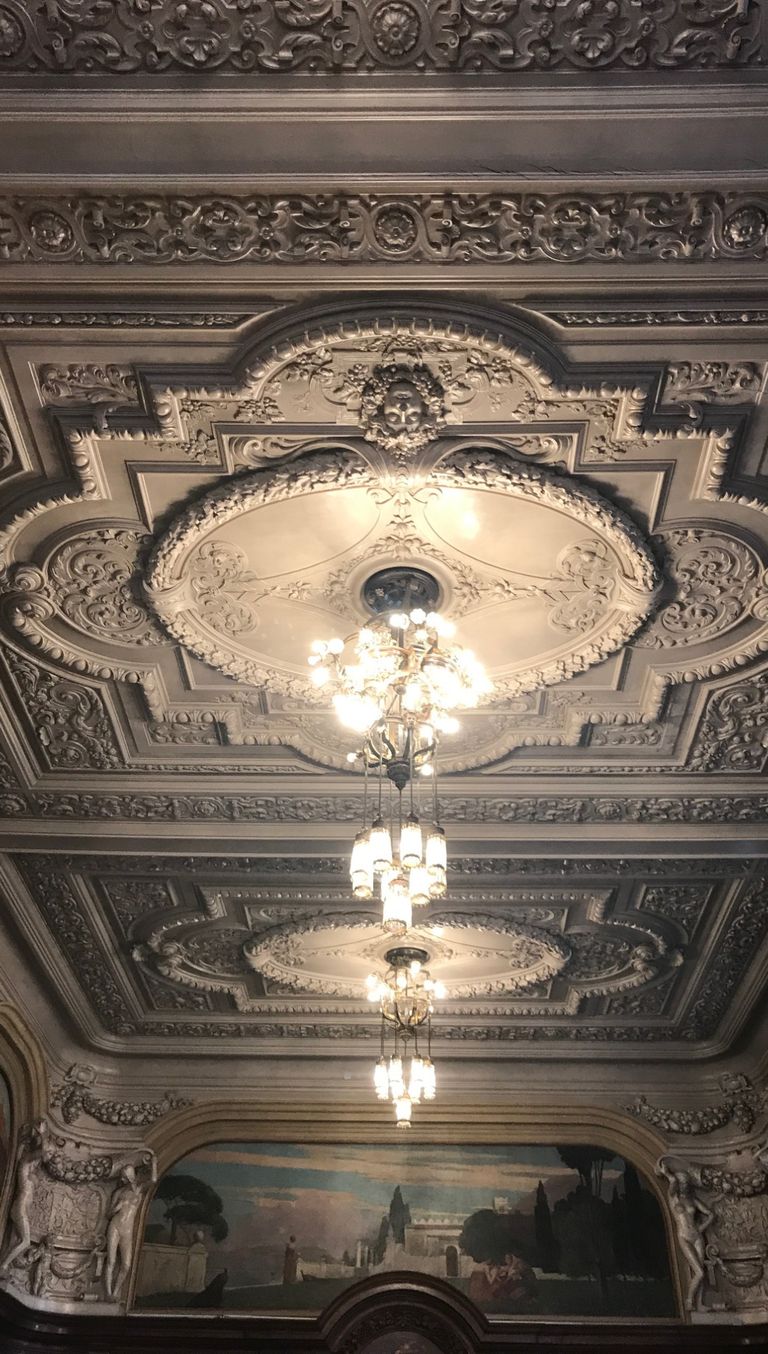
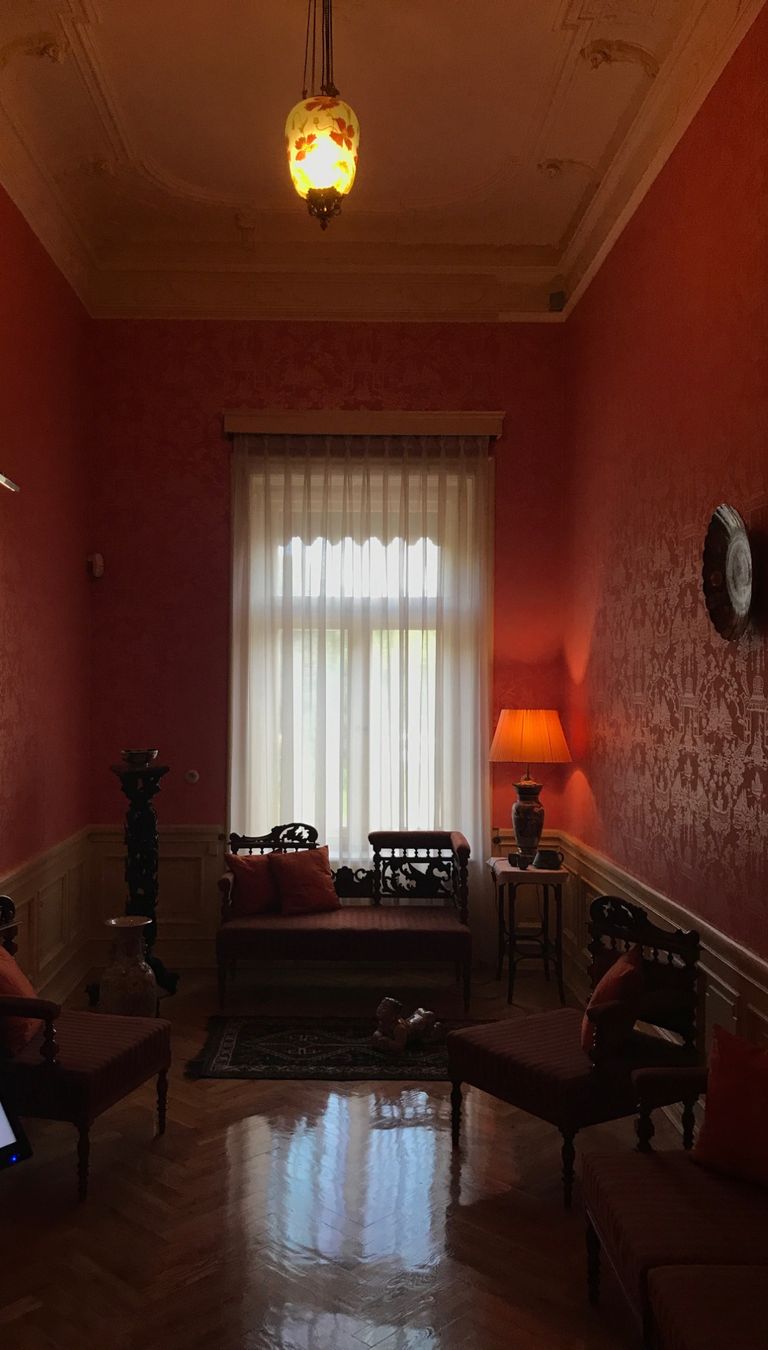
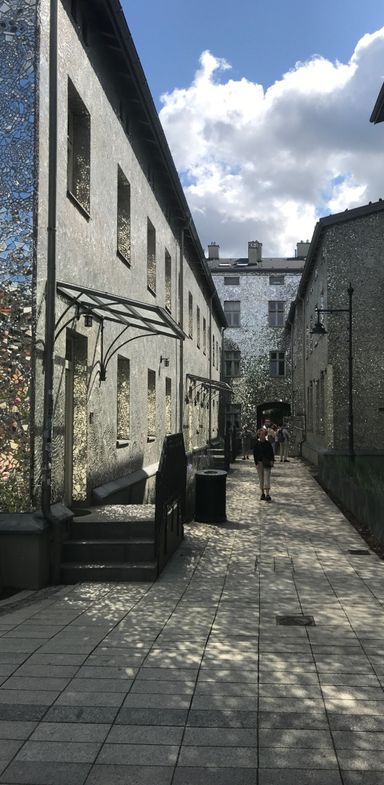
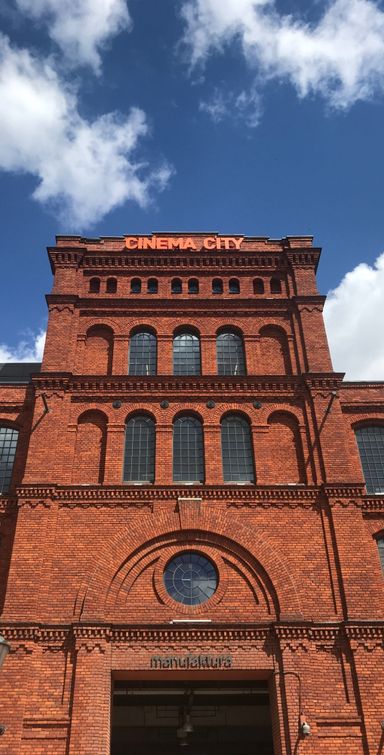
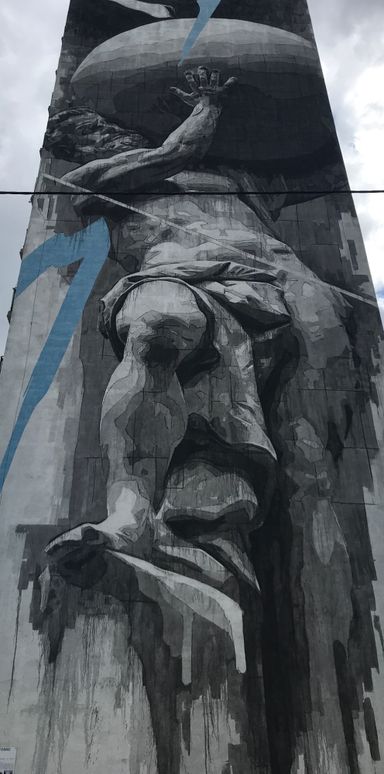
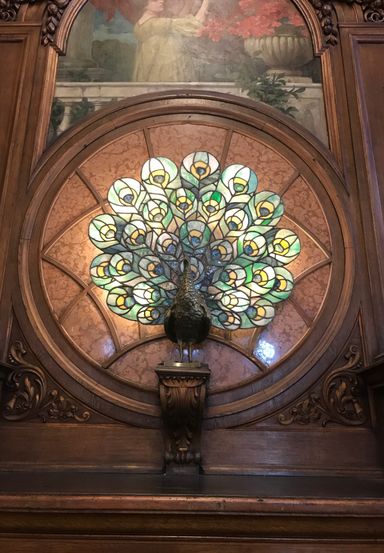
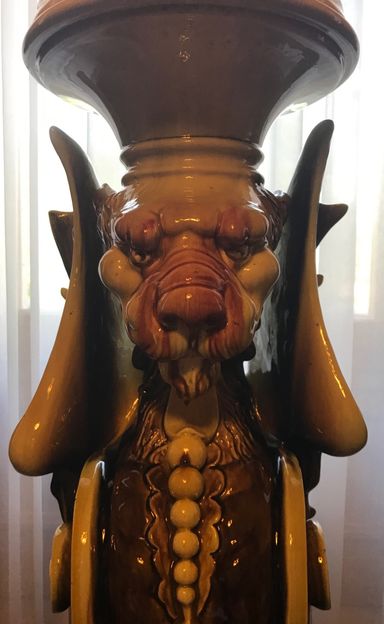
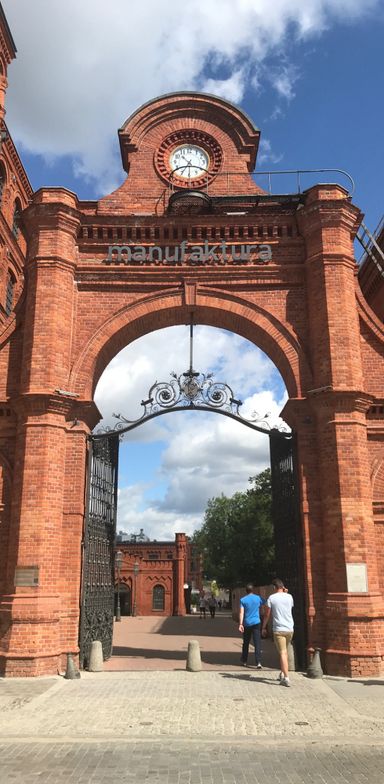
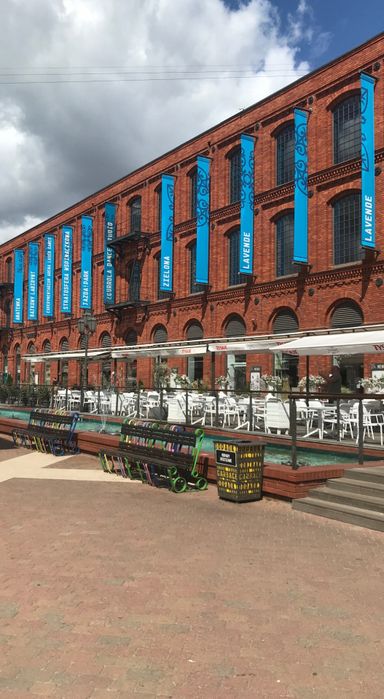
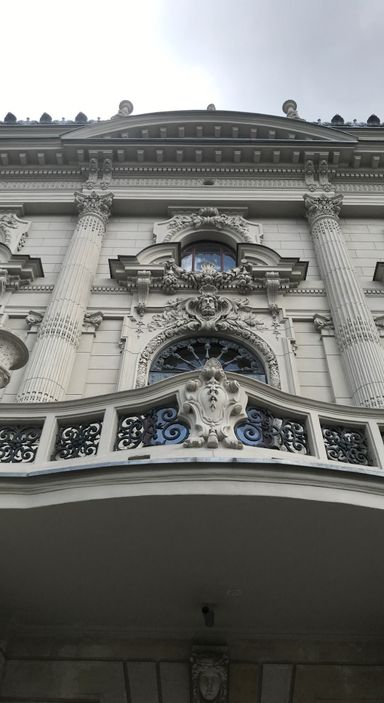
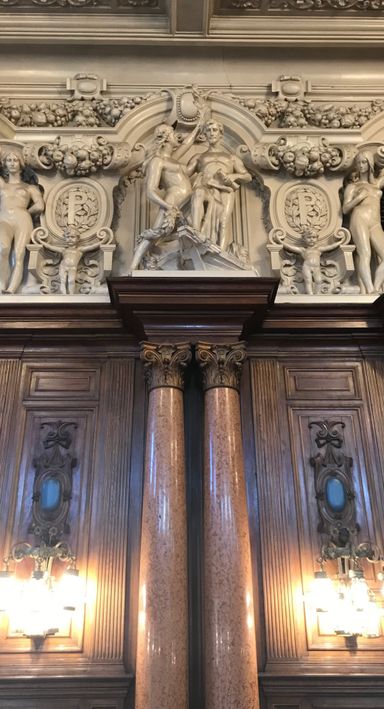
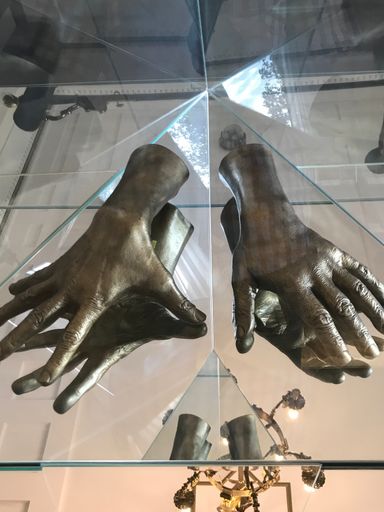
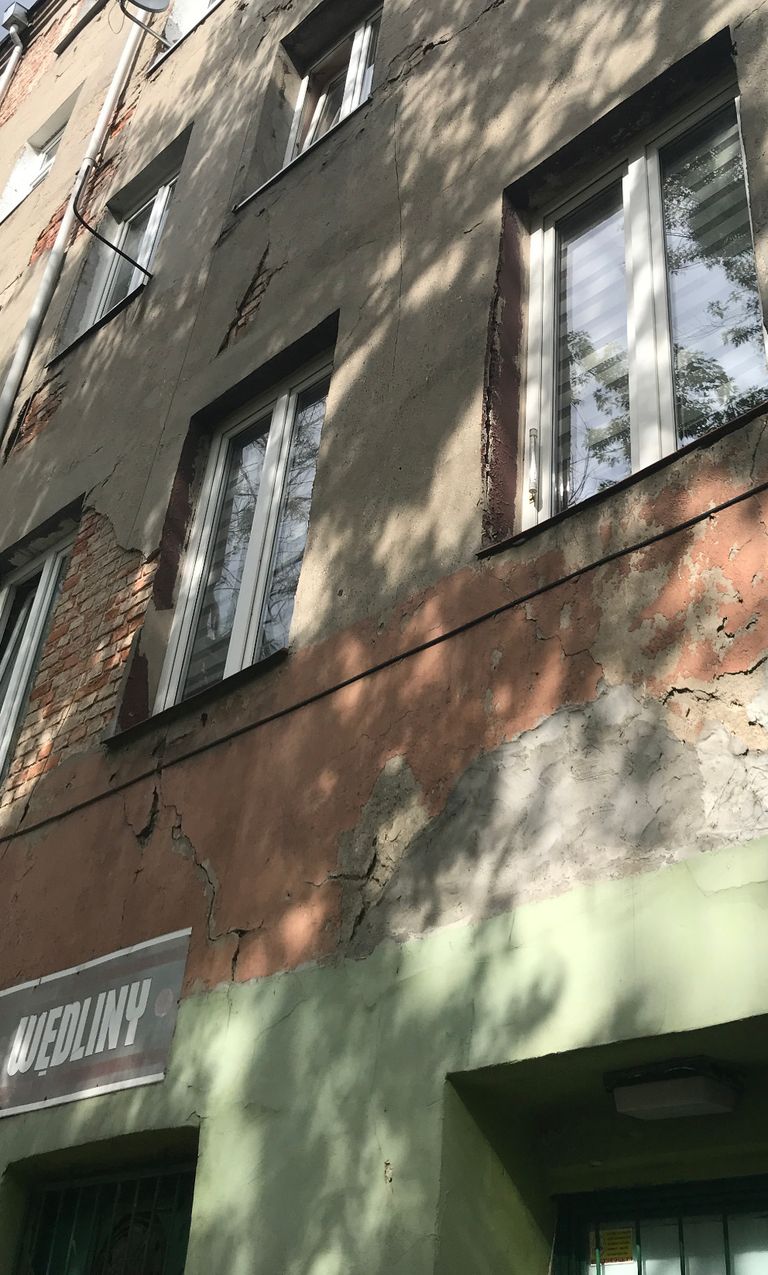
In the Łódź Ghetto
In the fall of 1941 the Germans already cram 160,000 people into the ghetto, in an area of only 4.3 square kilometers.
Mass accommodation is created in schools and halls for Jewish Germans who, like Sybil and her mother Adelheid, arrive to the ghetto at the end of October.
The space there is so tight that people sleep lying on their sides, back to back. There are no beds: people sleep on the floor.
The sanitary conditions are unimaginable for us today: toilets often have no water flushes and are available only in insufficient quantities.
Link to the Ghetto Museum Łódź!
Ghetto Łódź:
Hohensteiner St.
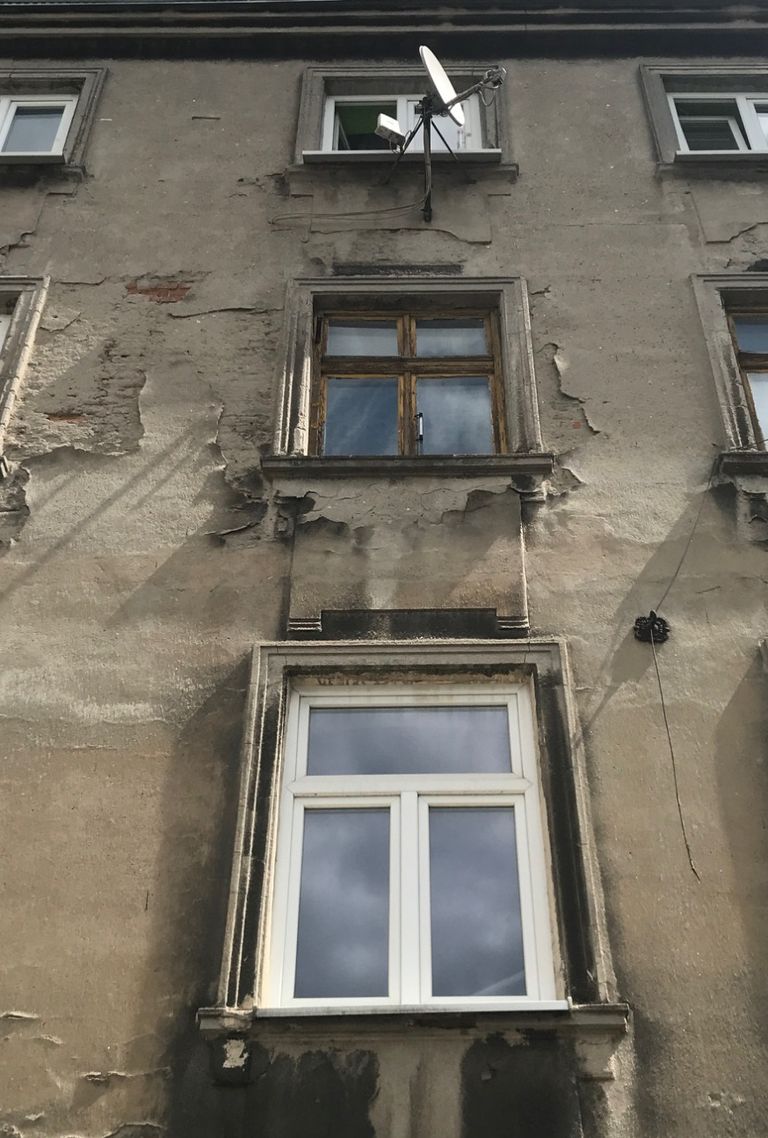
The Nazis designate the Old Town of Łódź and Bałuty and Marysin neighborhoods as the ghetto. The areas are inhabited mainly by the poorer strata of the population.
After arriving in the ghetto, Sybil and her mother Adelheid were assigned accommodations in 70, Hohensteiner Street 70 (today Zgierska) and in 11, Reiter Street (today Urzędnicza) .
Katarzyna and I discover that only a few of the houses from Sybil's time have survived. In 2022 Zgierska is a multi-lane street: gas stations, supermarkets, apartment blocks and high-rise buildings to the left and right....
Even today we see that more common people live in this area.
We take a break in front of an old house. This could have been Sybil and Adelheid‘s lodgings.
Ghetto Łódź:
Live below the limit!
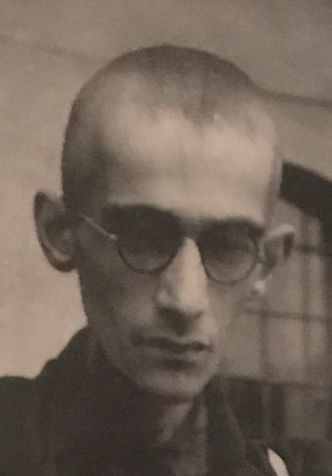
Nel ghetto ermeticamente chiuso gli abitanti devono lavorare per i tedeschi. I tedeschi forniscono cibo e medicine insufficienti alla popolazione. Le conseguenze sono la fame e le malattie.
Al mattino c'è un caffè, un brodo marrone ed una zuppa dall'aspetto e dall'odore disgustosi. La razione del pranzo consiste in 280 grammi di pane. La sera c'è di nuovo caffè. Chi ha un lavoro riceve un pasto extra.
I nuovi arrivati, come Sybil e Adelheid, vendono le loro cose a prezzi ridicoli per ottenere un pezzo di salsiccia o di margarina.
Le due donne riescono in qualche modo a sopravvivere all'inverno 1941/42. Nel gennaio 1942, il termometro scende a -20° Celsius.
11, Reiter Street: Window into the past
In May 1942 Sybil and Adelheid live in the Reiterstraße (today Urzędnicza) 11.
The preliminary research has shown that the house number 5 has been preserved. Is also number 11 still standing? And if so: in what condition?
Katarzyna and I turn into the former Reiterstraße and walk along the front of the houses: 5, 7, 9 and finally 11.
The building is unchanged, only the facade and the windows have been renewed.
Chance or a higher power gives us a brief glimpse into the past:
The iron gate is open, as is the door behind it that leads to the stairwell. Obviously, the same stairs still exist that Sybil and Adelheid climbed to reach room 47, as they were freezing, starving and exhausted.
If Sybil and Adelheid stepped out of the gate they could not have crossed the street, for their room, which they shared with others, is on the border of the ghetto.
A fence that runs along the sidewalk separates them from the world, where there was much less hunger.
This world was only 5 or 6 meters away and yet unreachable.
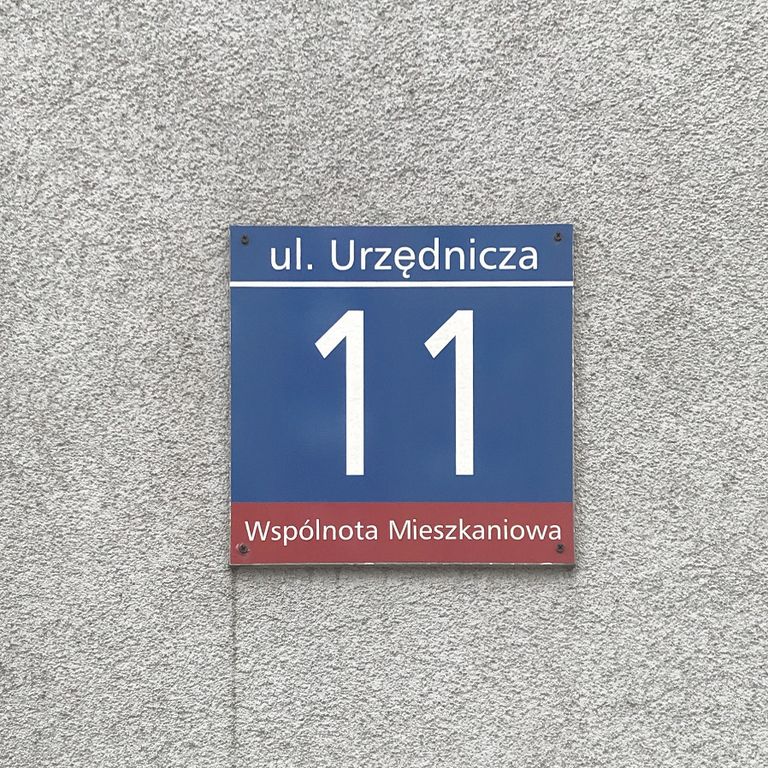
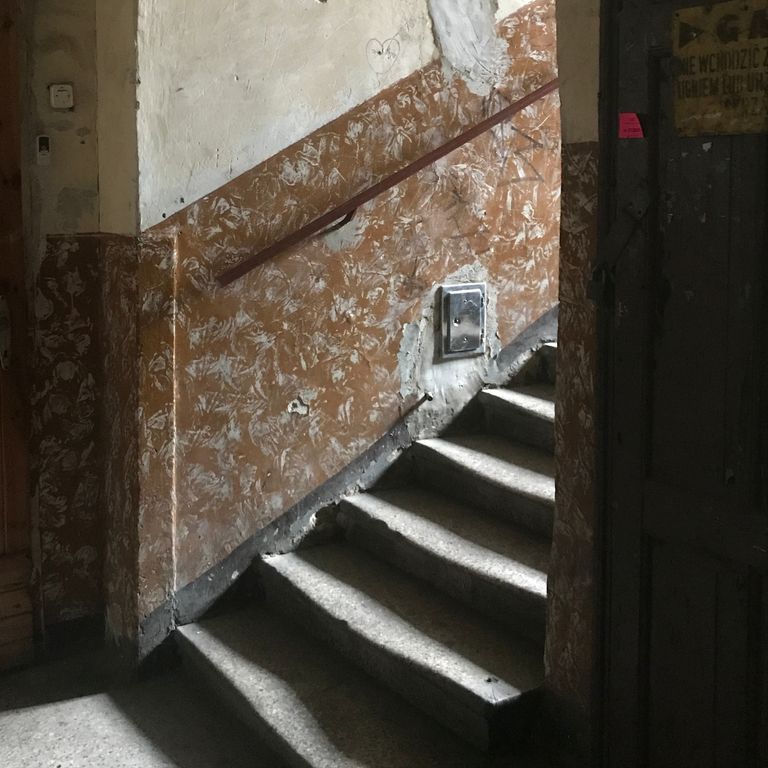
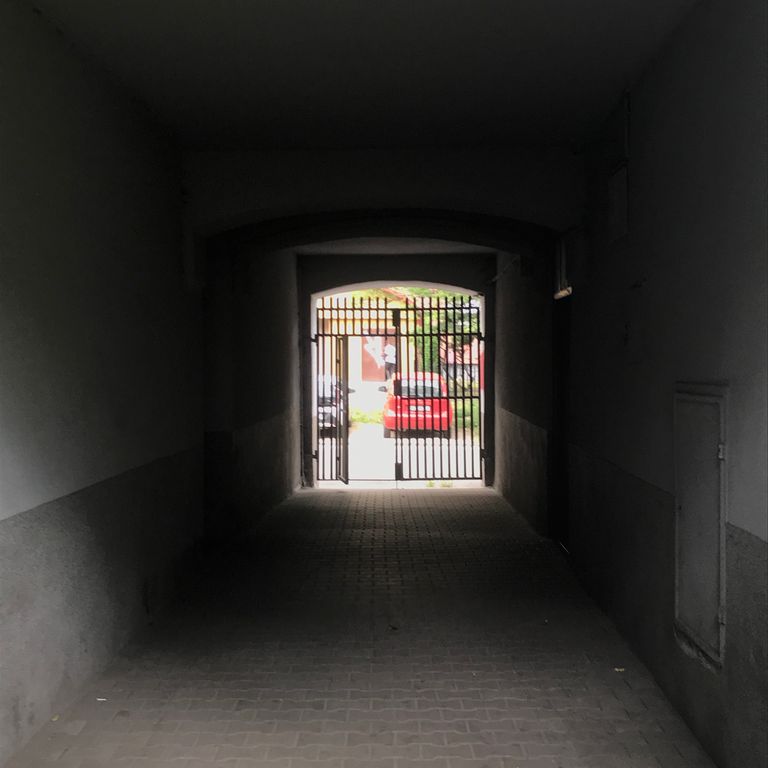
Ghetto Łódź:
Jewish Cemetery
Georg John
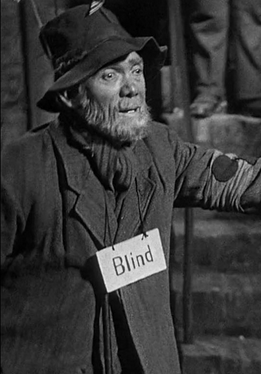
Georg John was a colleague of Sybil. They acted together in several films. Georg also came from a Jewish family. He was deported from Berlin to Łódź on the same transport as Sybil.
Georg appeared in films that became classics. In Fritz Lang's crime film M he can be seen as a blind balloon salesman, who recognizes the serial killer by his whistle. The 1931 film strip is one of the best of all time and is available on BluRay in a superbly restored version. Buy or lend it and join in the excitement!
The 62-year-old Georg survived the arrival in Lodz only by 3 weeks. The approximately 45,000 people who died in the ghetto like him were buried in a separate cemetery within the Jewish cemetery.
Katarzyna asks the cemetery caretaker, who looks in his lists. Georg John, whose real name was Georg Jacobsohn, is - for whatever reason - not listed.
At the cemetery
We search and find the ghetto burial ground where today tall grass, bushes and small trees grow.
It is difficult for us to comprehend that Sybil and Georg, who signed autographs, walked red carpets at film premieres in a flurry of flashes of press photographers and were admired by millions on the big screen, died in the ghetto or were murdered in an extermination camp.
We walk back through the cemetery to the exit and photograph what impresses us, moves us, shakes us.
The tomb of the entrepreneur who ran the textile factory is by far the most magnificent and imposing one.
Finally, we take a look at the mortuary which has been preserved in its original state.
It was here that Georg's body was prepared for burial.
We set off for the Radegast (now Radogoszcz) train station, another important marker in Sybil's life.
We are unlucky: the memorial is closed on Fridays. Through the former ghetto we return to the hotel.
As we say goodbye to each other, Katarzyna's smartwatch shows that we have covered a good 24 kilometers on Sybil's tracks.
Link to the Jewish cemetery!
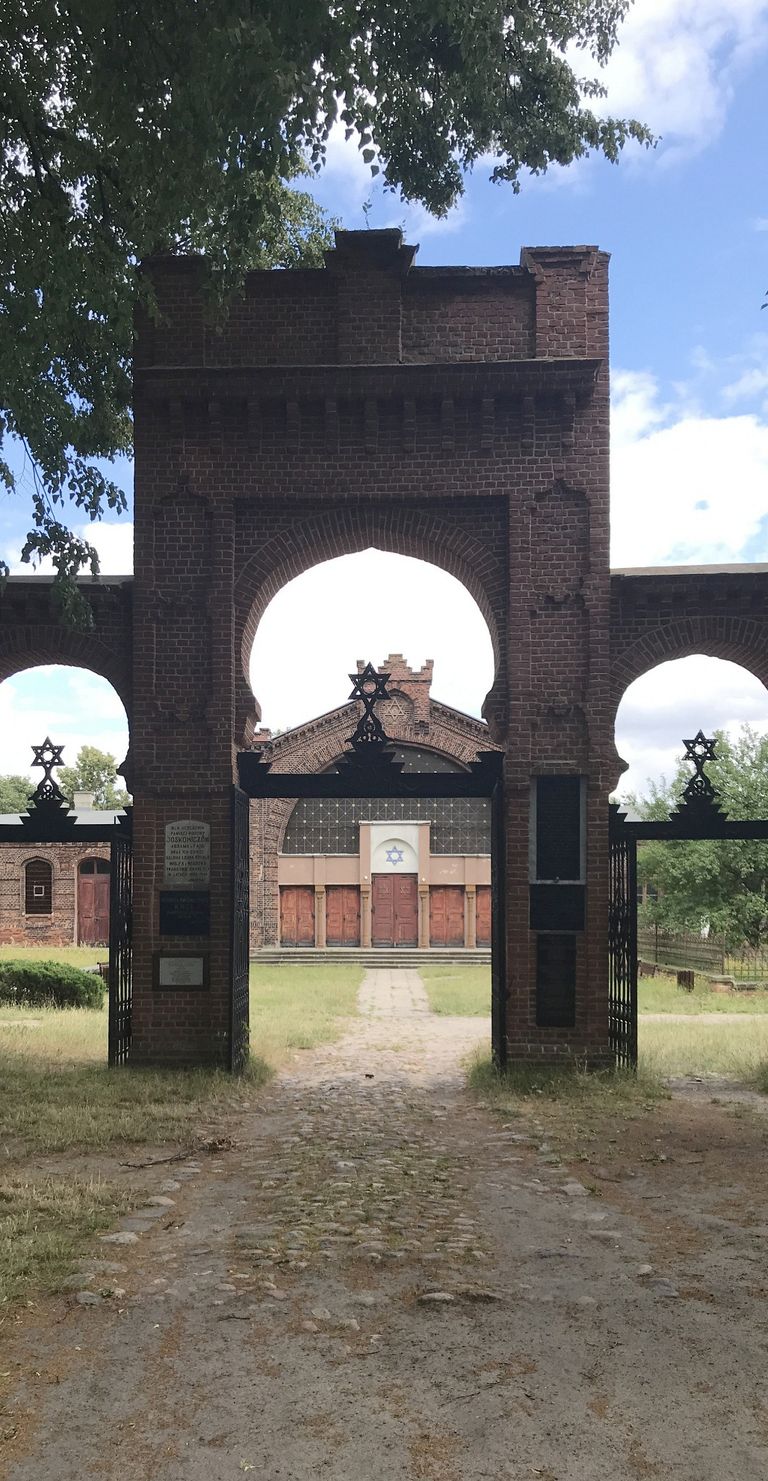
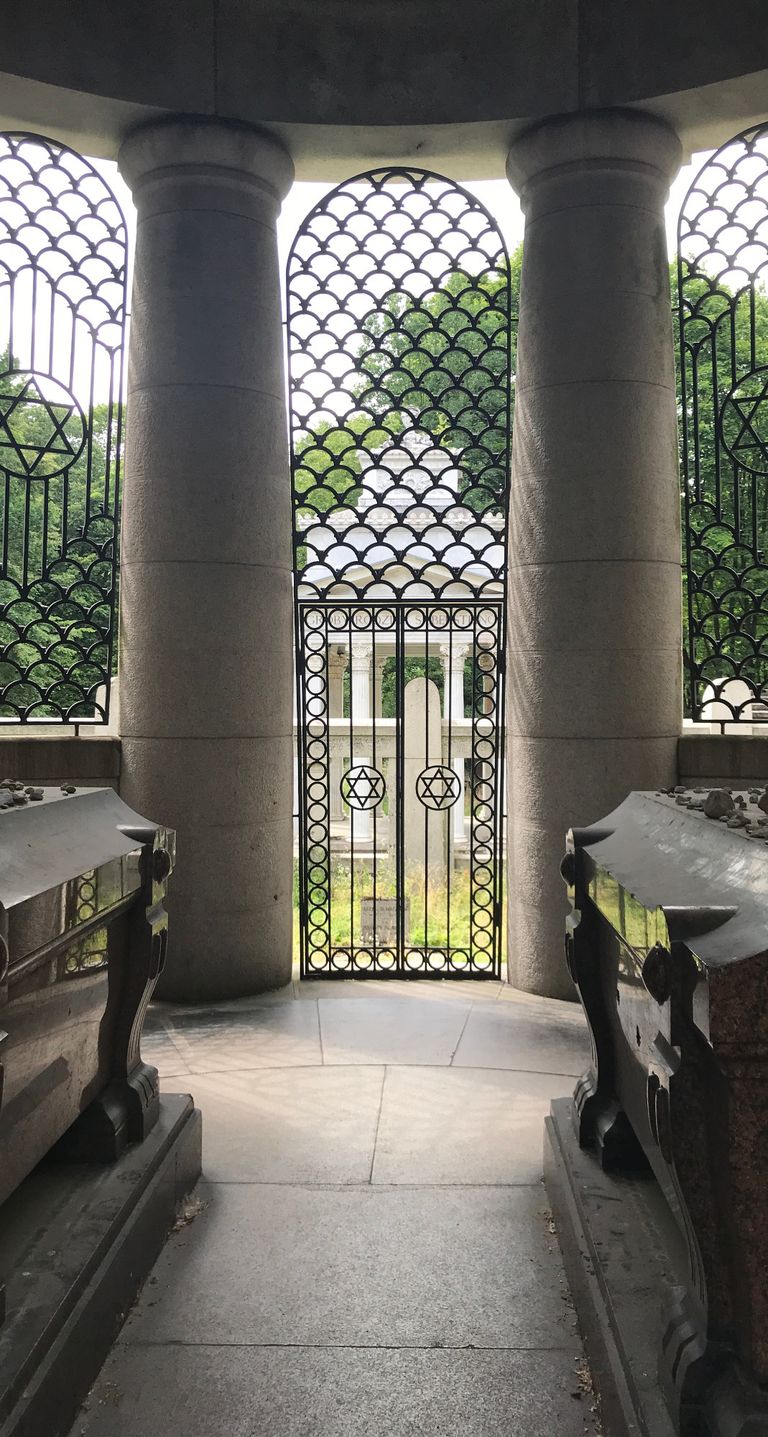
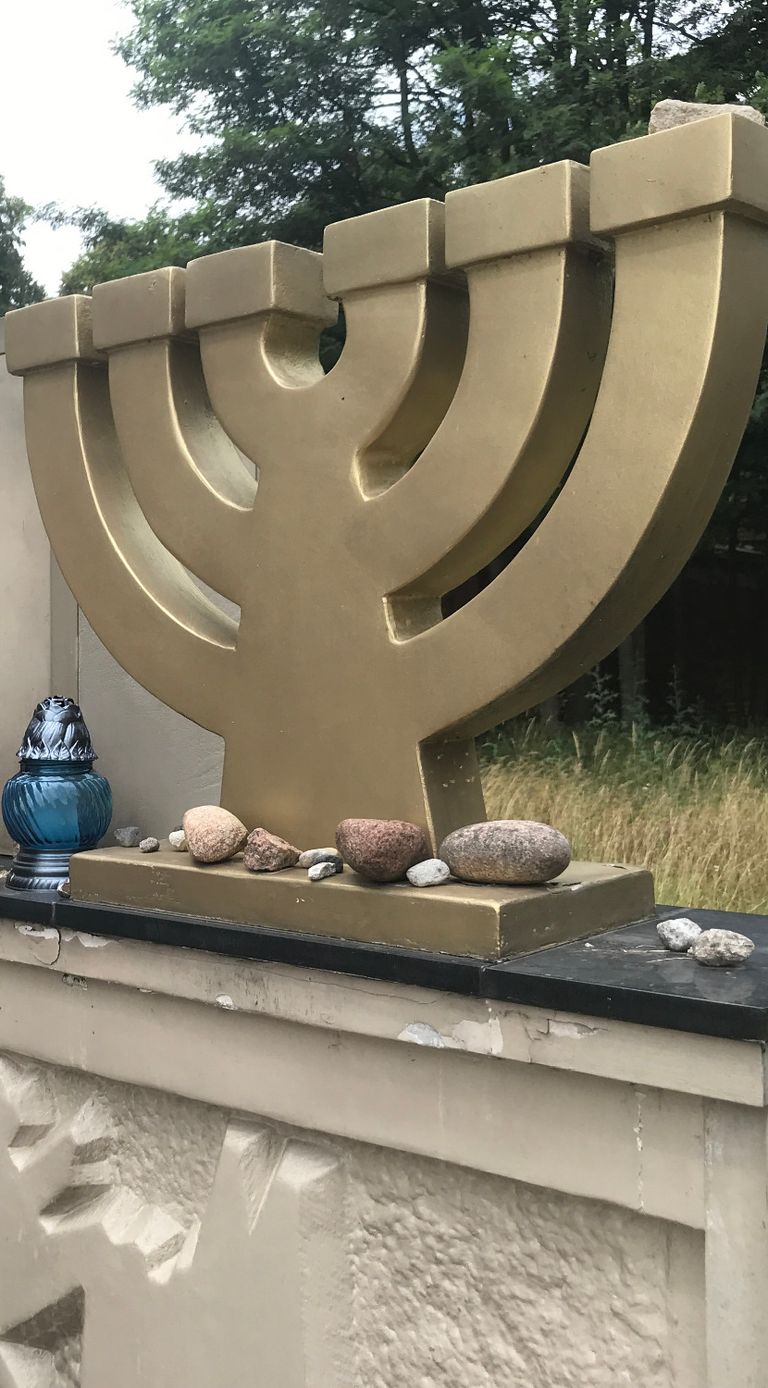
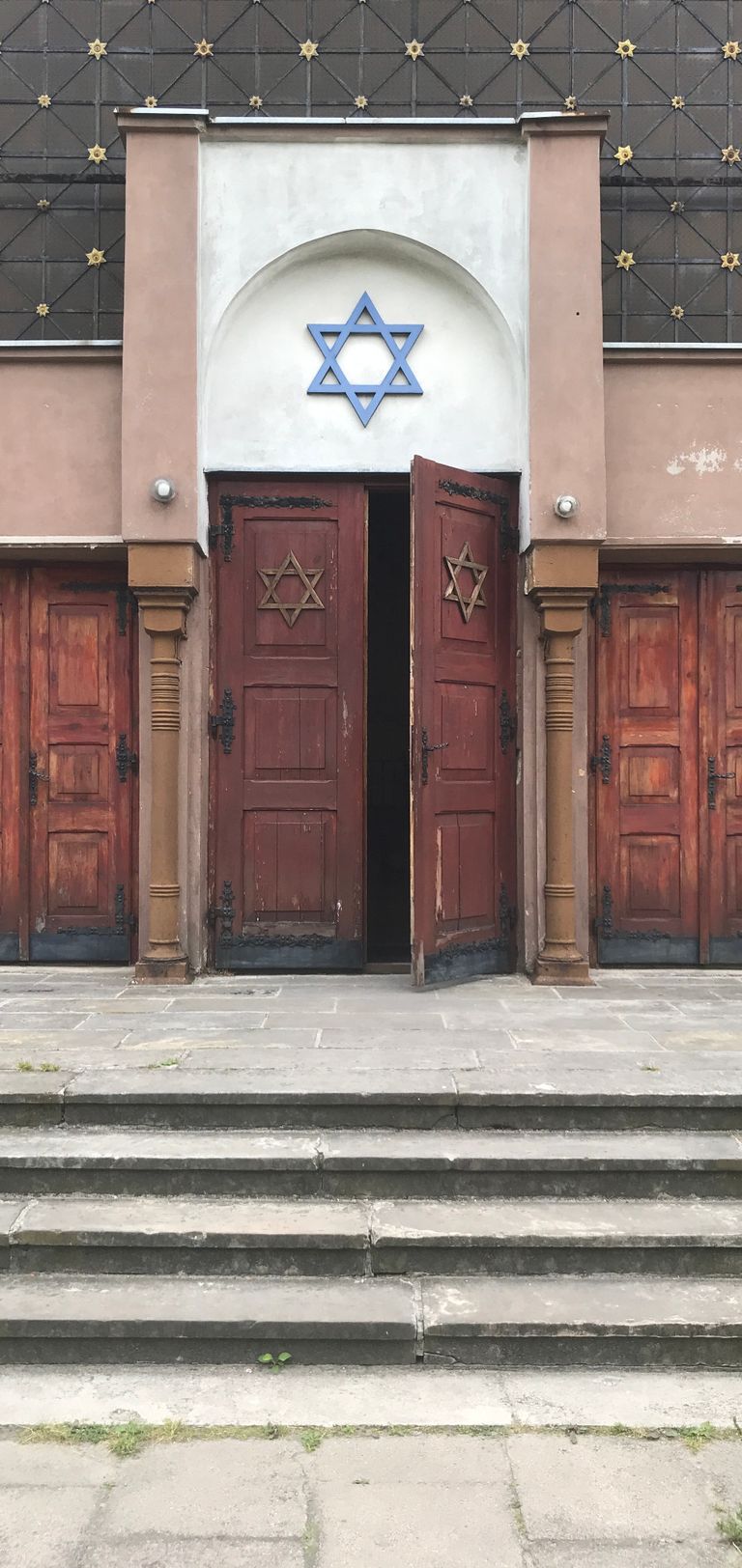
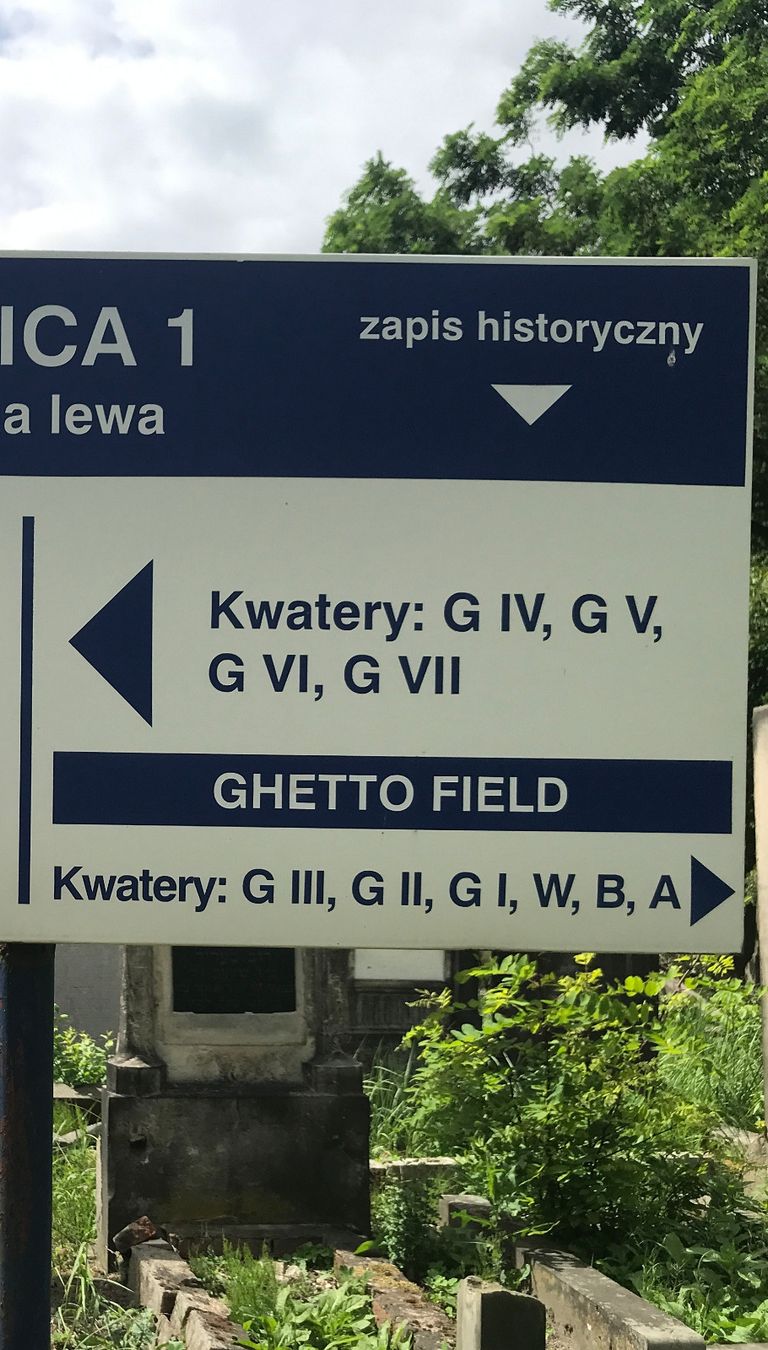
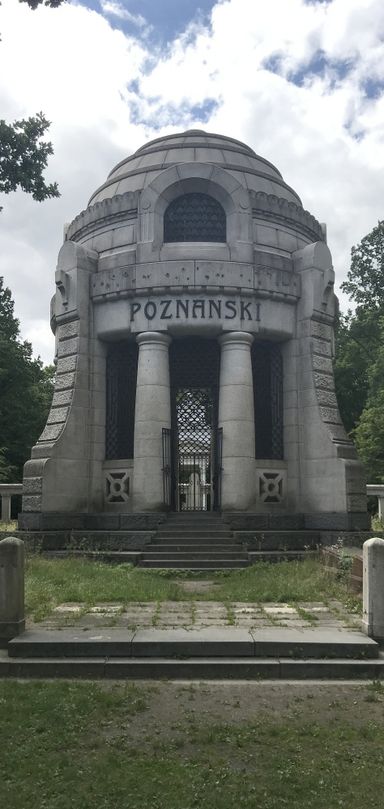
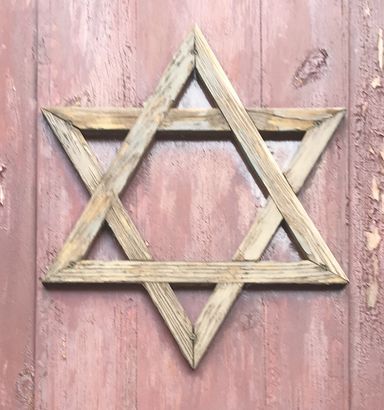
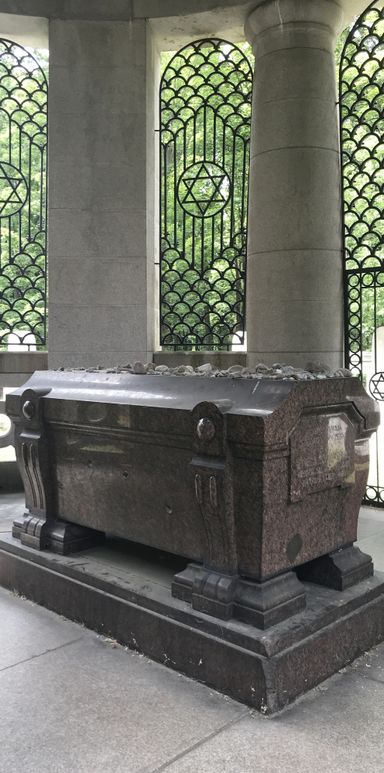
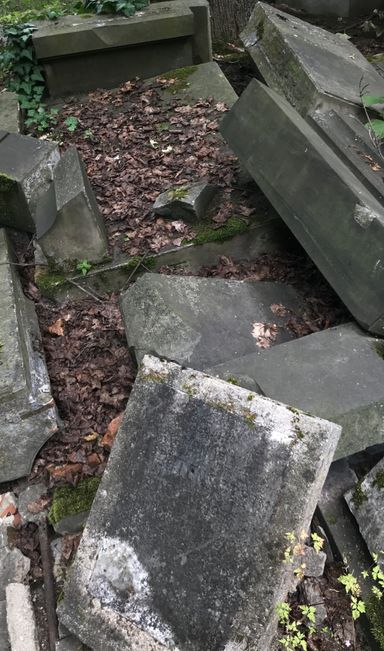
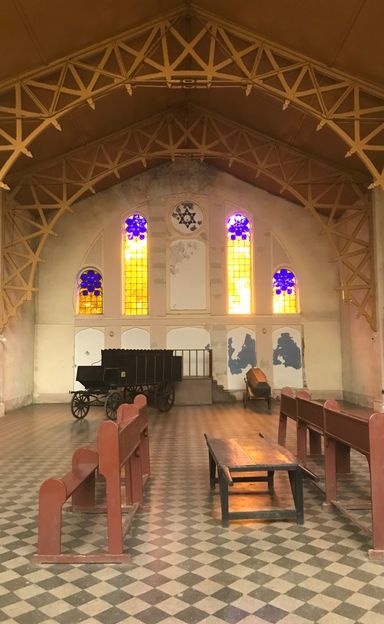
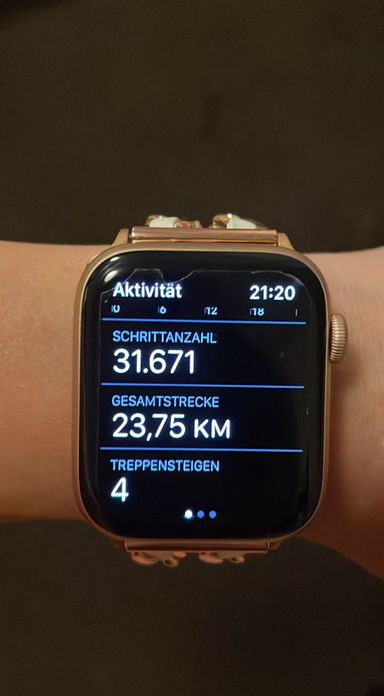
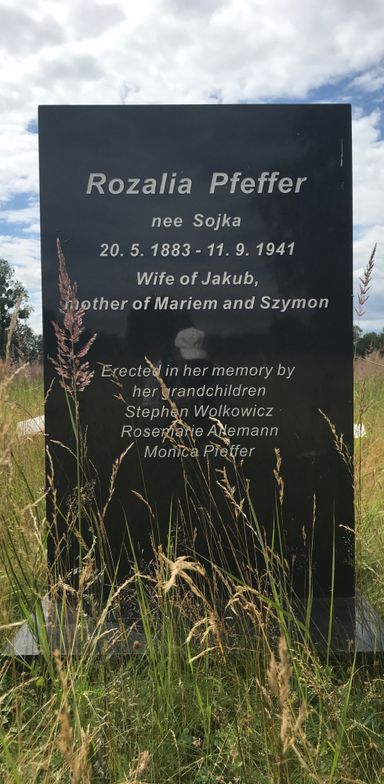
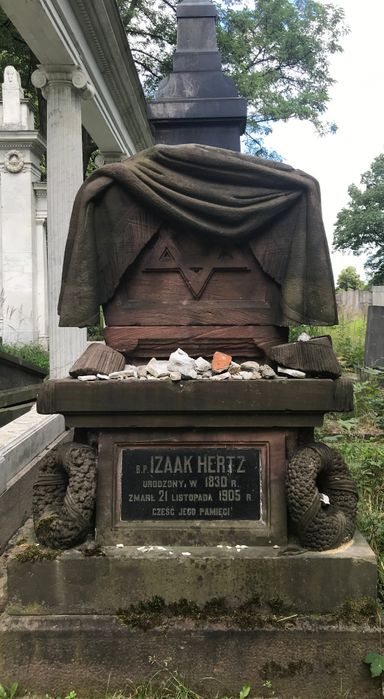
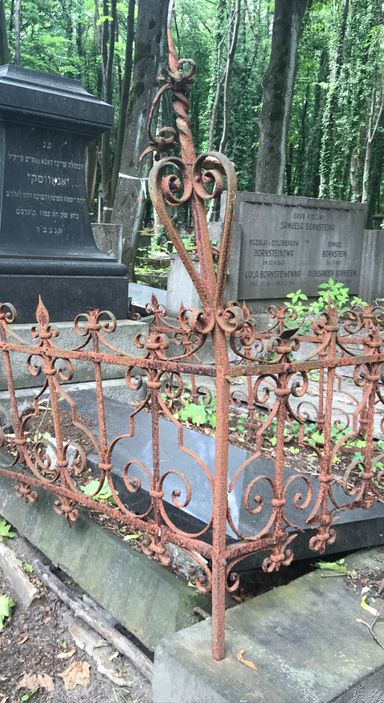
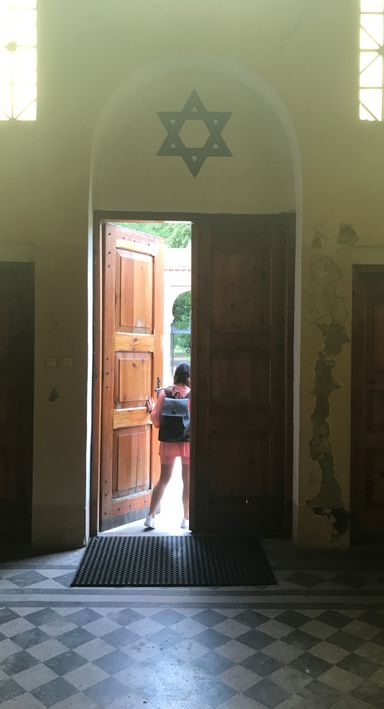
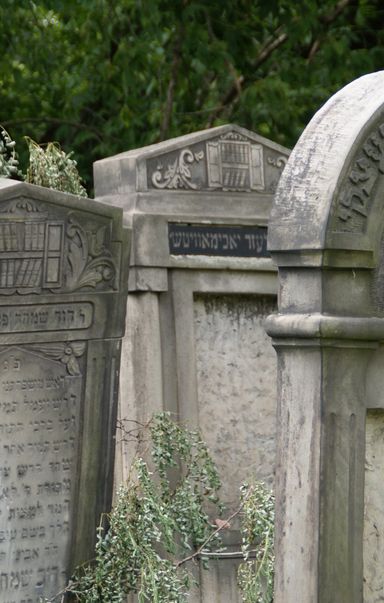
07-16-22:
Radogoszcz railroad station and Chelmno death camp
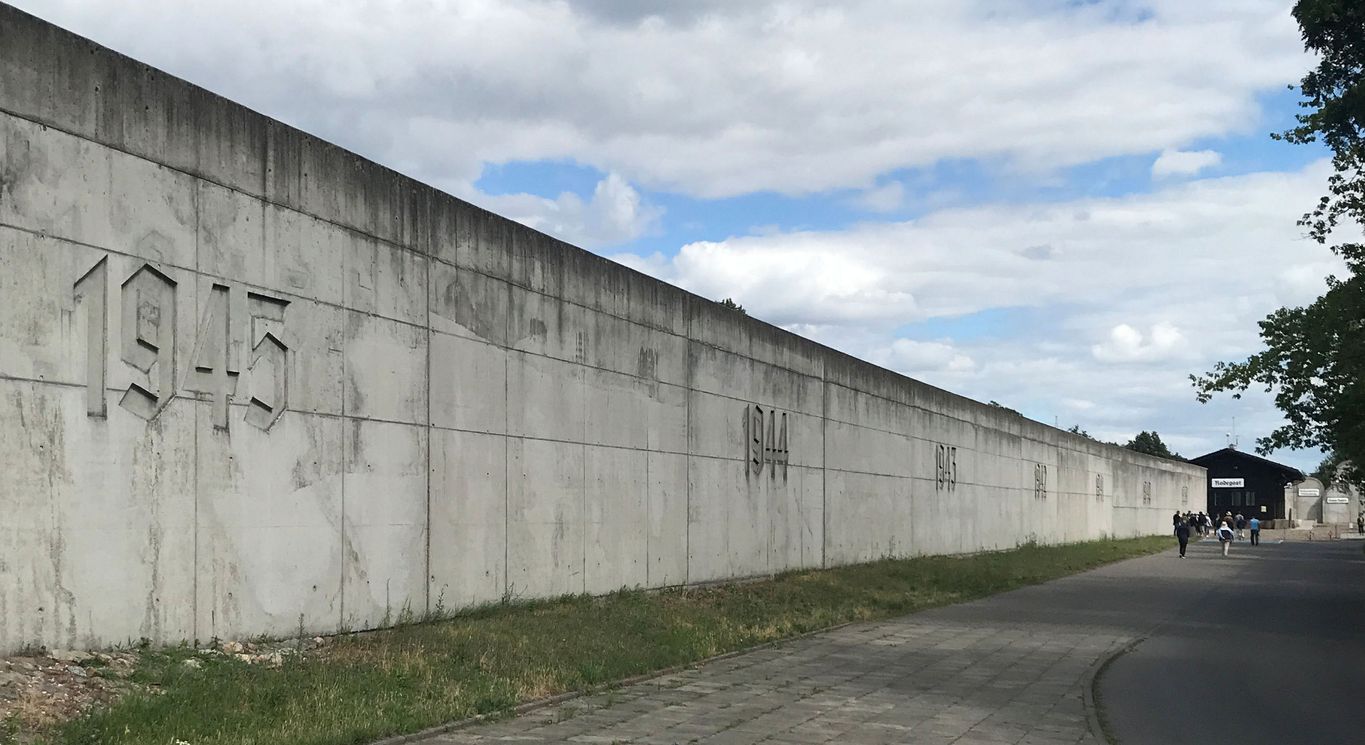
Tunnel of the Radogast Memorial...
Łódź:
Radegast train station
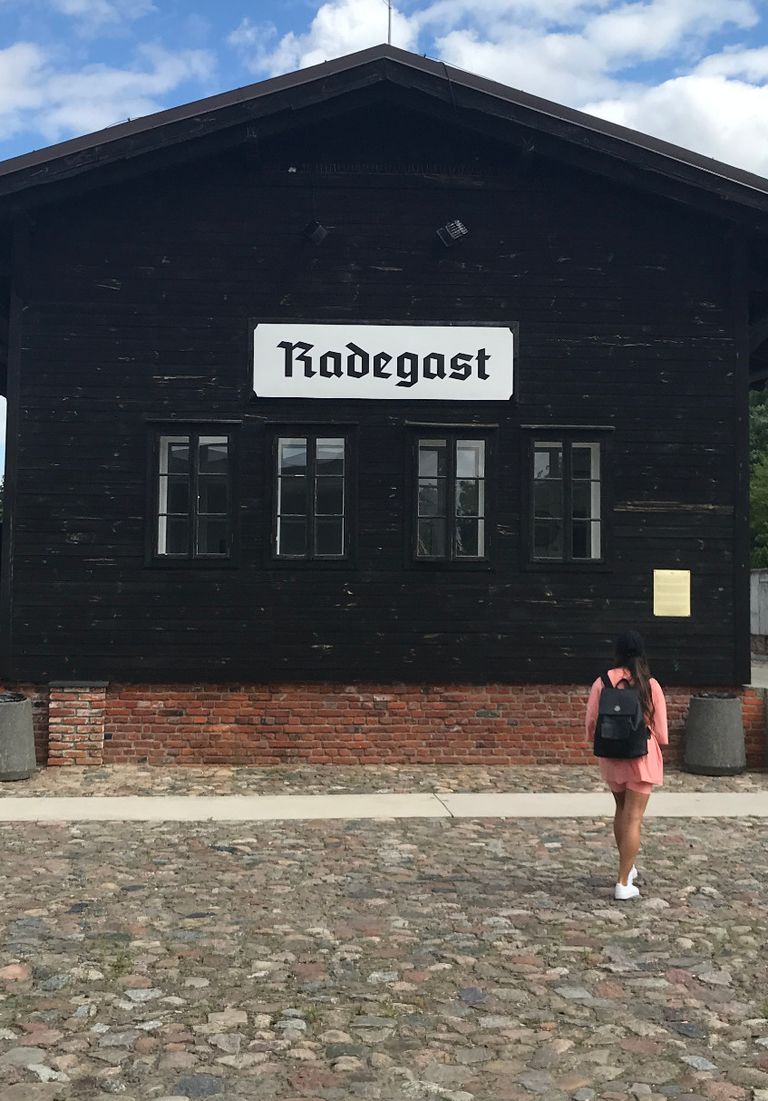
Sybil and her mother are deported from Berlin to Lodz by train. The journey ends at the Radegast suburban train station, which is about a 20-minute walk from the ghetto.
As Sybil and her mother make their way into the ghetto, guarded by Germans and a Jewish work crews, they have no idea what awaits them.
Today Radegast is a memorial site. It consists of a small museum In the restored station building and of a about 300 meters long tunnel.
On its walls there are lists of names. From them, transport into and out of the ghetto was managed.
Found it!
The DIN-A4 sheets are lined up in chronological order in the tunnel:
from 1940 when the ghetto was established to 1944, the year of its dissolution.
Each page contains about 30 to 40 names. Each name represents a person who was sent to or from the ghetto via Radegast – either to labor outside or to be exterminated.
Pictures hang between the lists. They show ghetto residents in workshops and factories working for German companies and the Wehrmacht.
In the station building there are display boards, a model of the ghetto and several extensive ring binders with transport lists.
In them, we search for entries about Sybil and Adelheid – and we find them!
Link to Radegast station!
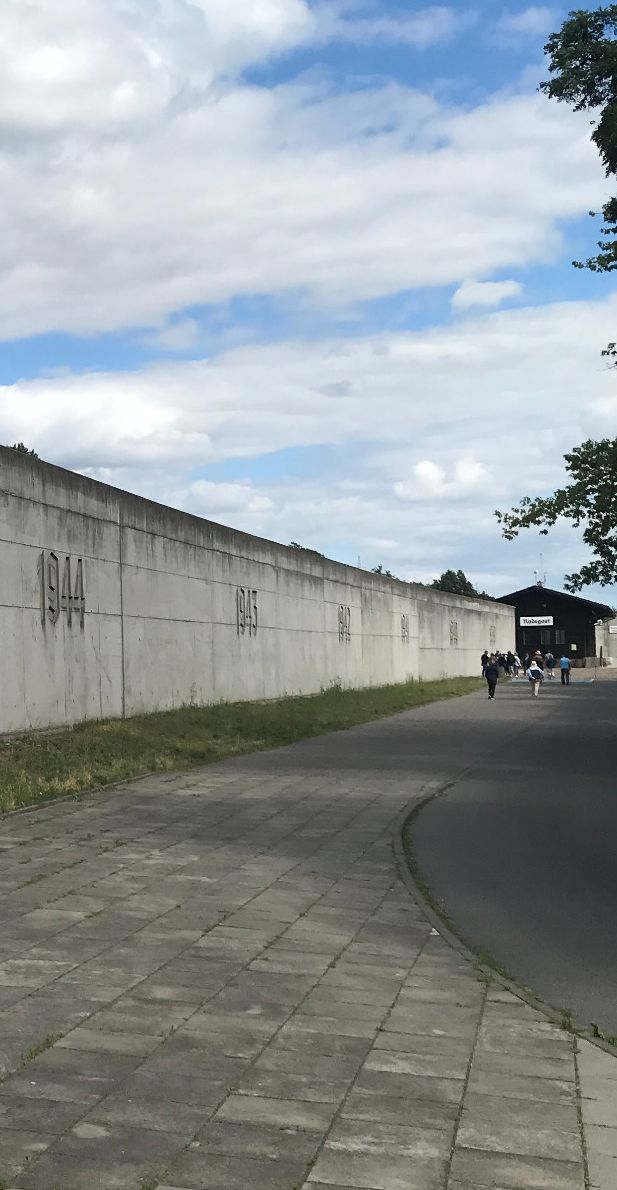
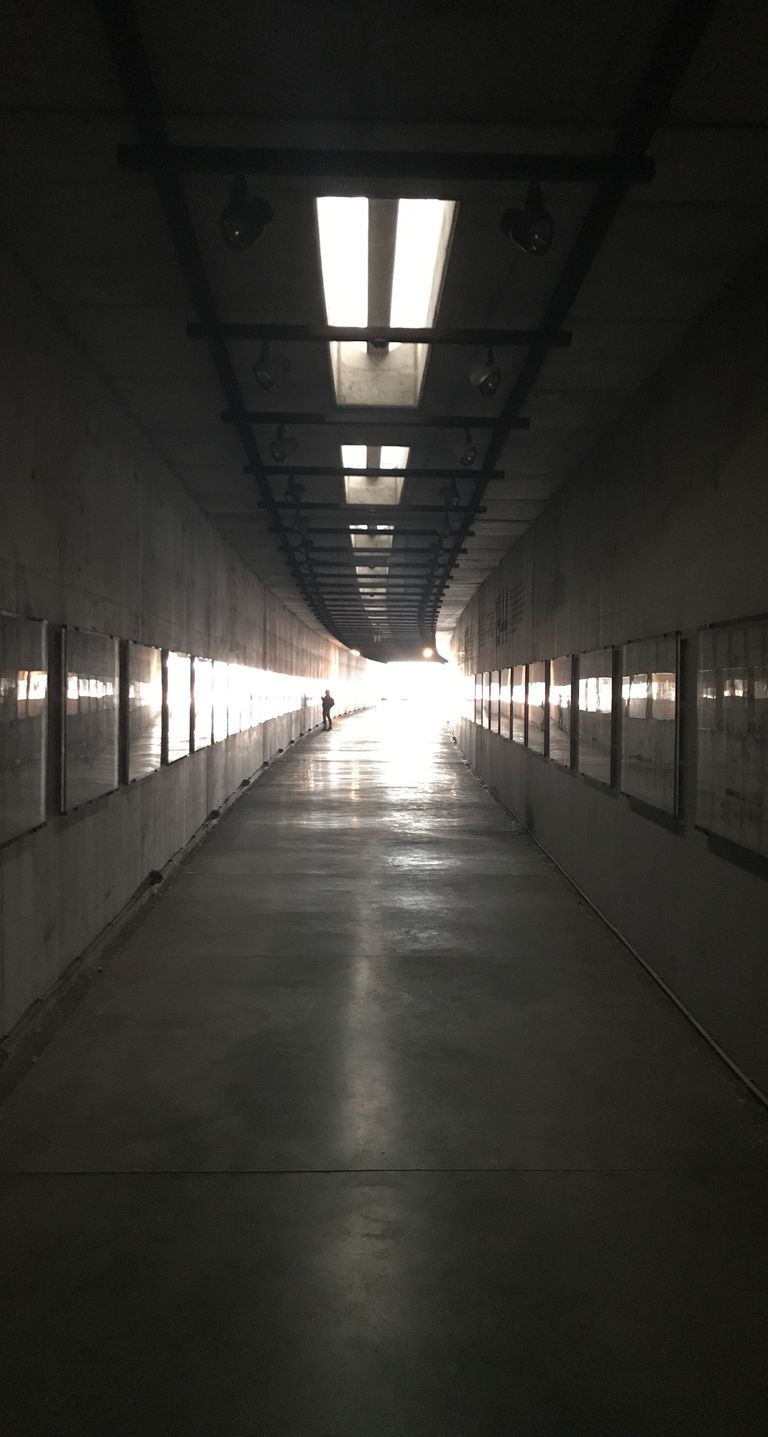
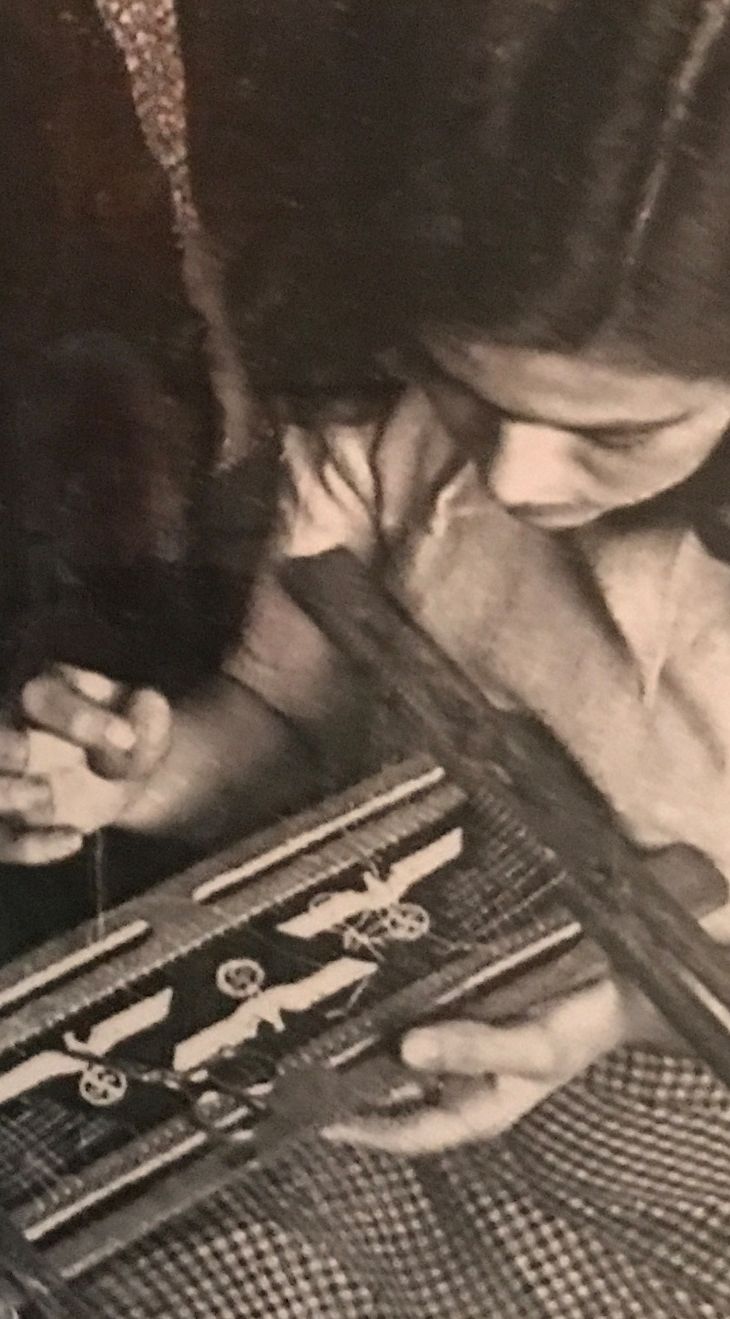
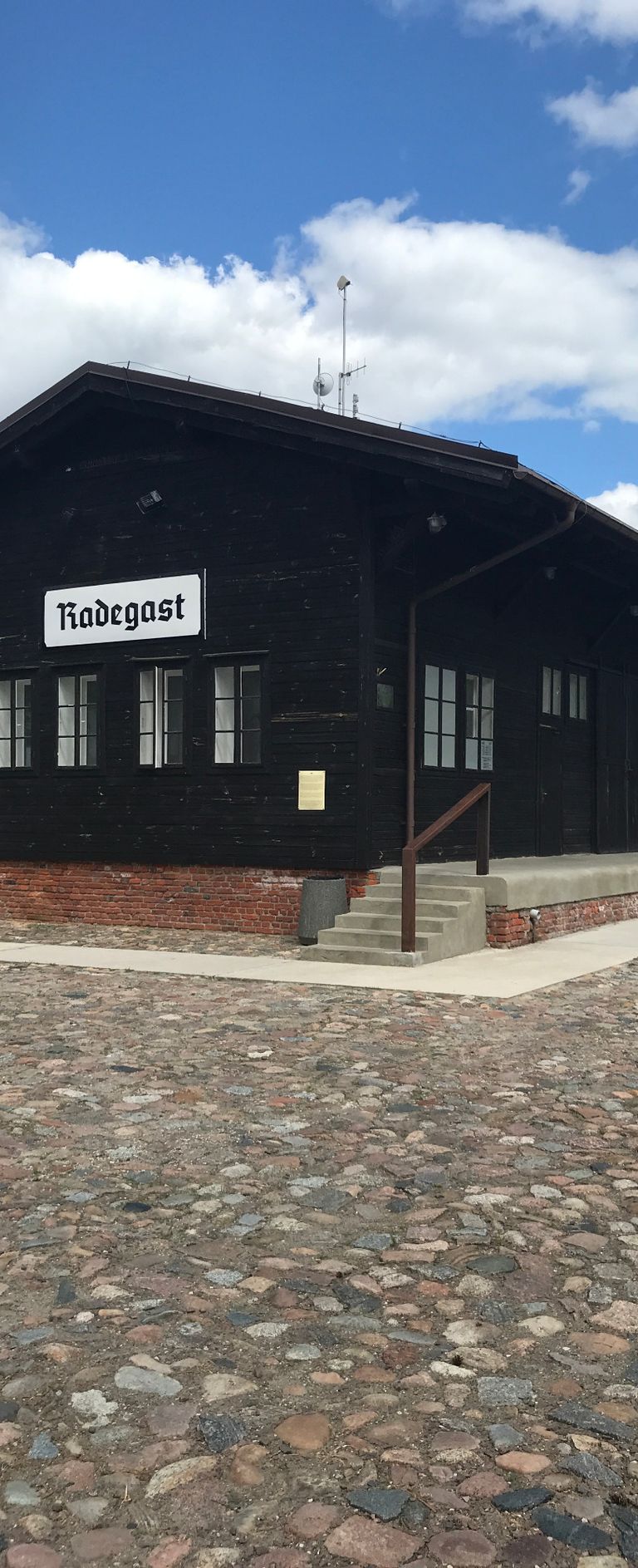
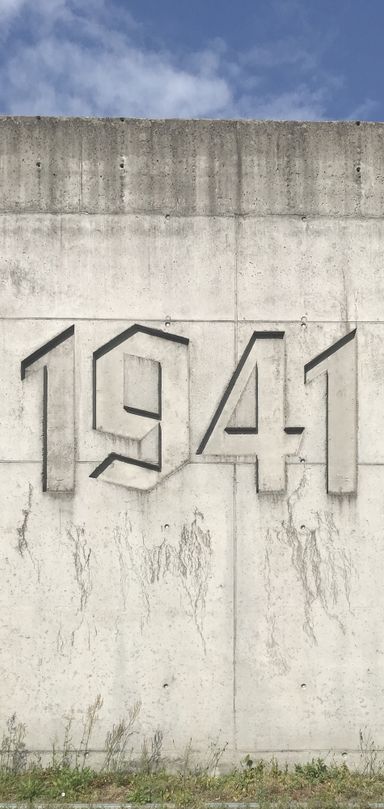
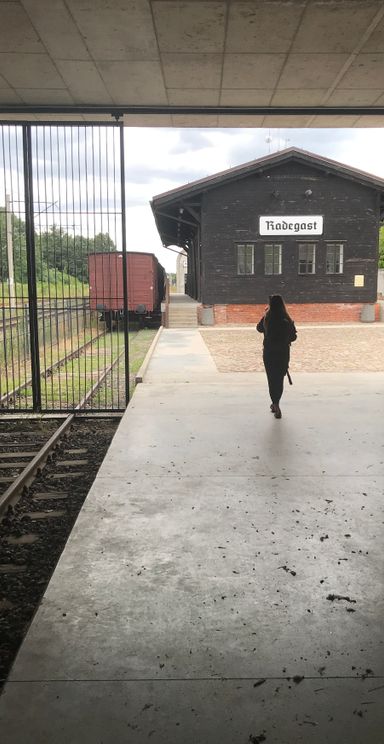
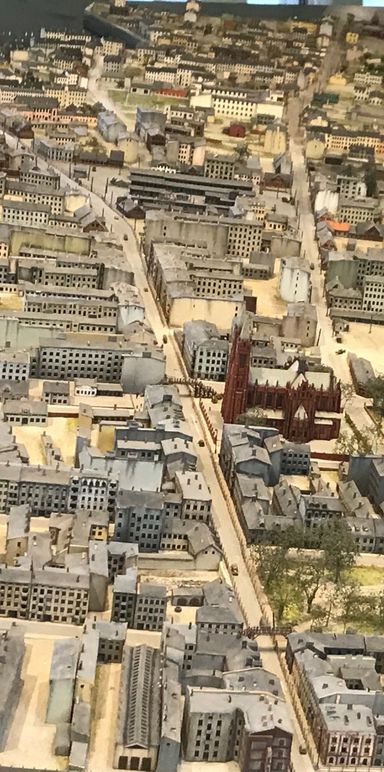
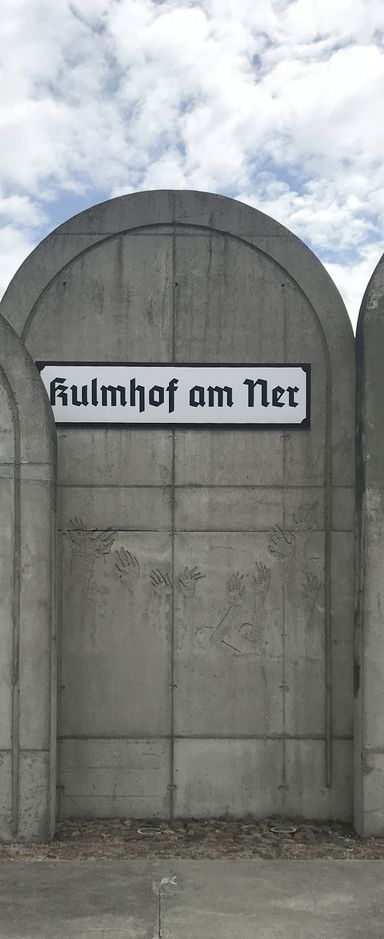
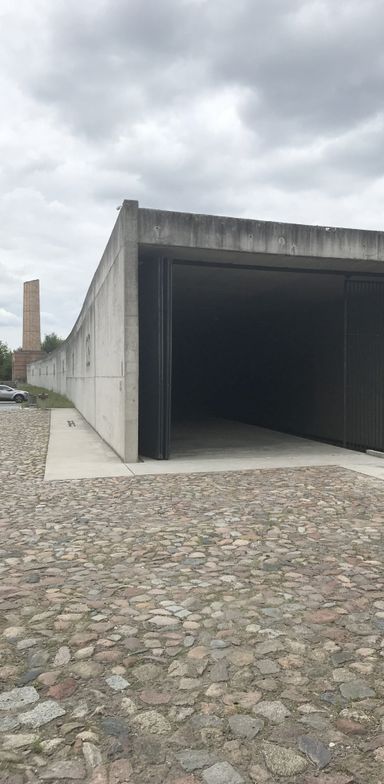
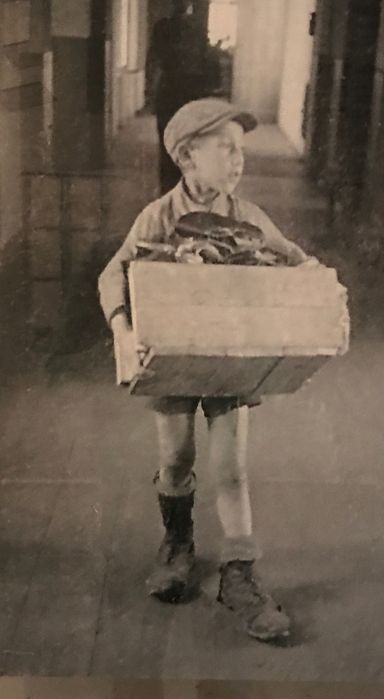
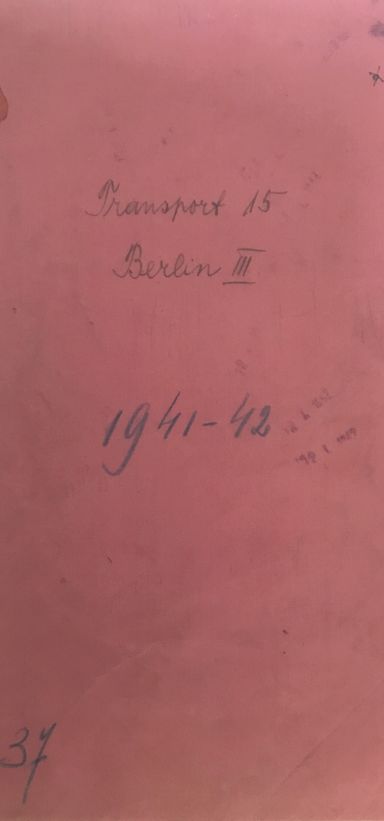
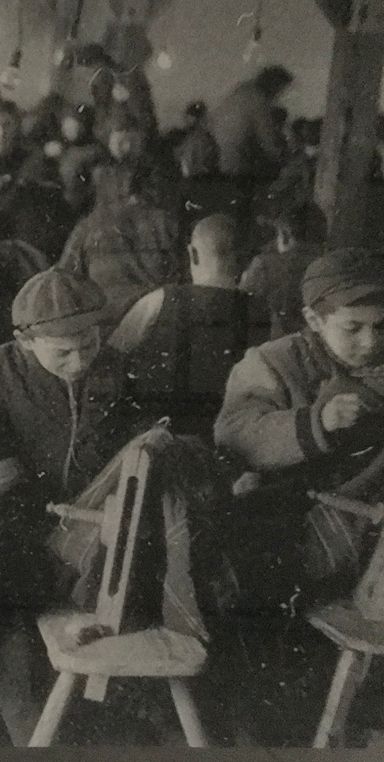
Extermination camp and cemetery Chelmno nad Nerem

At the beginning of May 1942 Sybil and her mother receive notification from the authorities of their resettlement from the ghetto.
A destination is not mentioned. The two women ask in writing to be exempted from the measure. On 8.5. the request is rejected: "ODMOWA".
One day later the transport from Radegast to Kulmhof (Chelmno), about 50 kilometers away, takes place.
Katarzyna steers the car through Łódź. Our route takes us west along major arterial roads. Gradually the area becomes more rural, the roads narrower.
Chelmno is still a village today. After about an hour‘s drive we arrive there. When the guardian of the memorial learns that Katarzyna is from Poland, she offers us a guided tour of the site.
The three of us are on the go for about 1 1/2 hours and Katarzyna translates the explanations. I record the conversation with my smartphone to evaluate it at home.
Link to the memorial in Chelmno!
Extermination camp: murder
The death camp is built on a former country estate.
On the first floor of the mansion, a small palace, Sybil and Adelheid have to undress. Then they go through a cellar corridor to a small wooden staircase that leads up a few steps.
A sharp bend to the right follows: Sybil and Adelheid enter a large room. The floor is completely covered with wooden grates.
In front and behind Sybil and Adelheid people crowd, naked like them. Young, old, families with children. They have come here with them from Łódź. When the room has filled up, the doors are locked.
Sybil and Adelheid do not know that they are on the loading area of a large truck. They hear an engine start up and feel slight vibrations.
They do not perceive the exhaust gases that are introduced. Carbon monoxide is a largely odorless gas. People react at different speed, depending on their constitution:
Sybil feels dizziness, severe headaches, nausea. She vomits, sees in blurred images that her mother and the others are in a similar situation as she.
People now realize that they are being murdered, that they are about to die. They scream in despair, banging on the walls with palms and fists - until they lose consciousness.
After about 15 minutes, when no more signs of life are heard, the truck with the bodies drives into a wooded area about four kilometers away.
Part of the south facade of the palace in Chelmno before 1939.
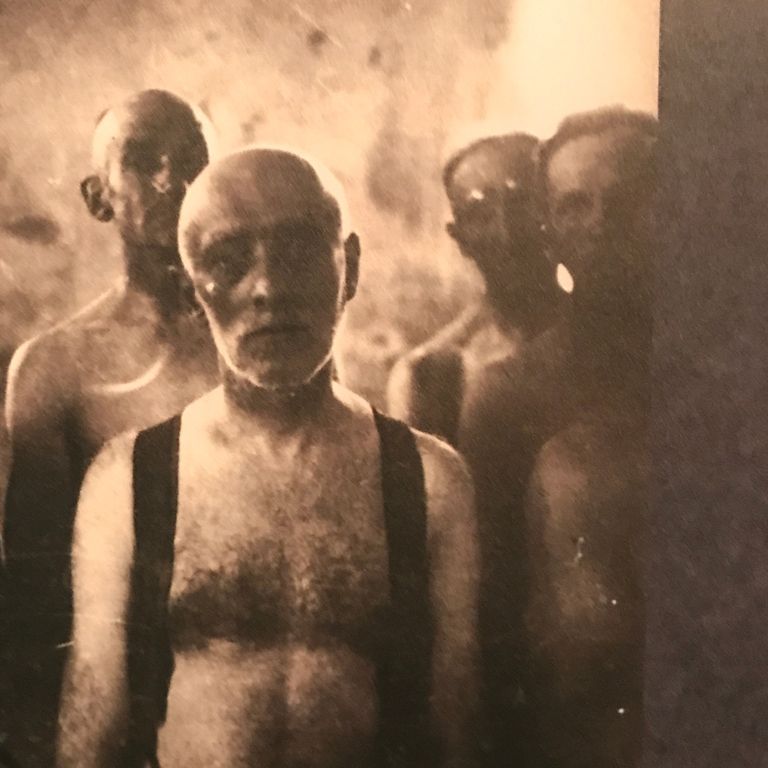
In the forest of Rzuchów: mass grave
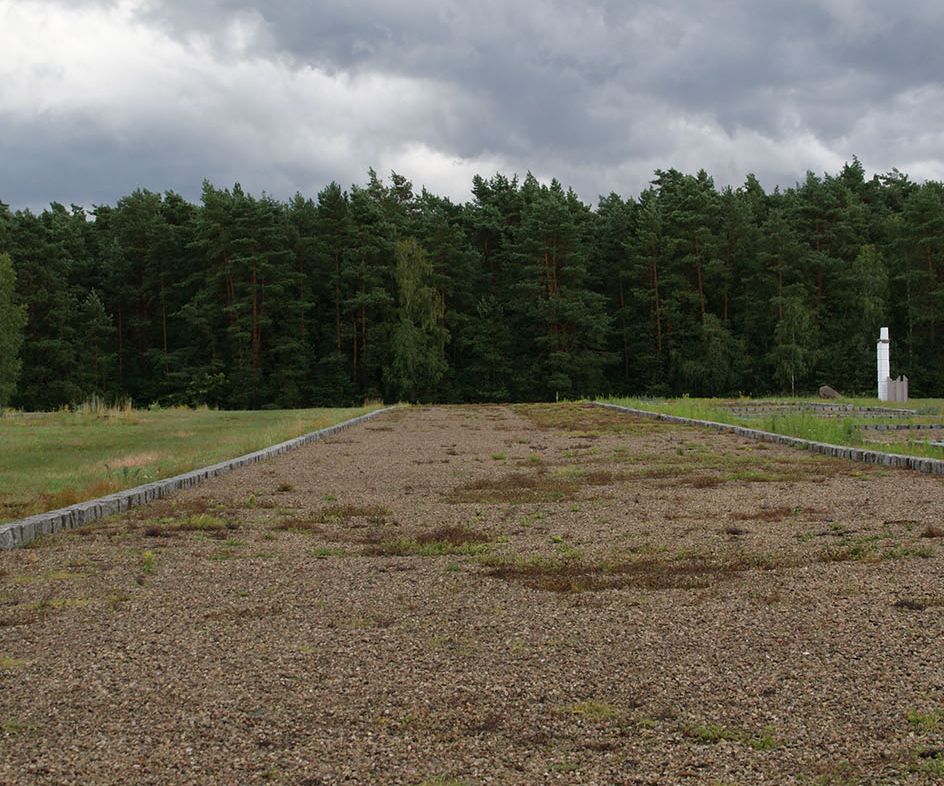
Katarzyna and I had planned to walk the 4 kilometers to the wooded area, roughly along the route taken by the truck carrying the bodies of Sybil and Adelheid 80 years ago.
A dark wall of clouds is gathering in the sky. We decide to take the car. After about 10 minutes we are on the spot.
As we walk towards the monument for the murdered, a thunderstorm starts with rain and lightning.
After the arrival of the truck a Jewish workcrew opens the doors of the loading area. Corpses fall towards the men.
They climb onto the loading area and carry them out one by one.
They are supervised by Germans. Those who are no longer able, because they are physically or mentally at the end of their tether, are shot.
I imagine dead Sybil being dragged across the floor, grabbed by her wrists and ankles and thrown into a deep pit.
Below, members of the work crew pile the bodies next to and on top of each other. Each layer is covered with a layer of lime. When the pit is almost full, it is filled with earth.
Link to the memorial in the forest of Rzuchów!
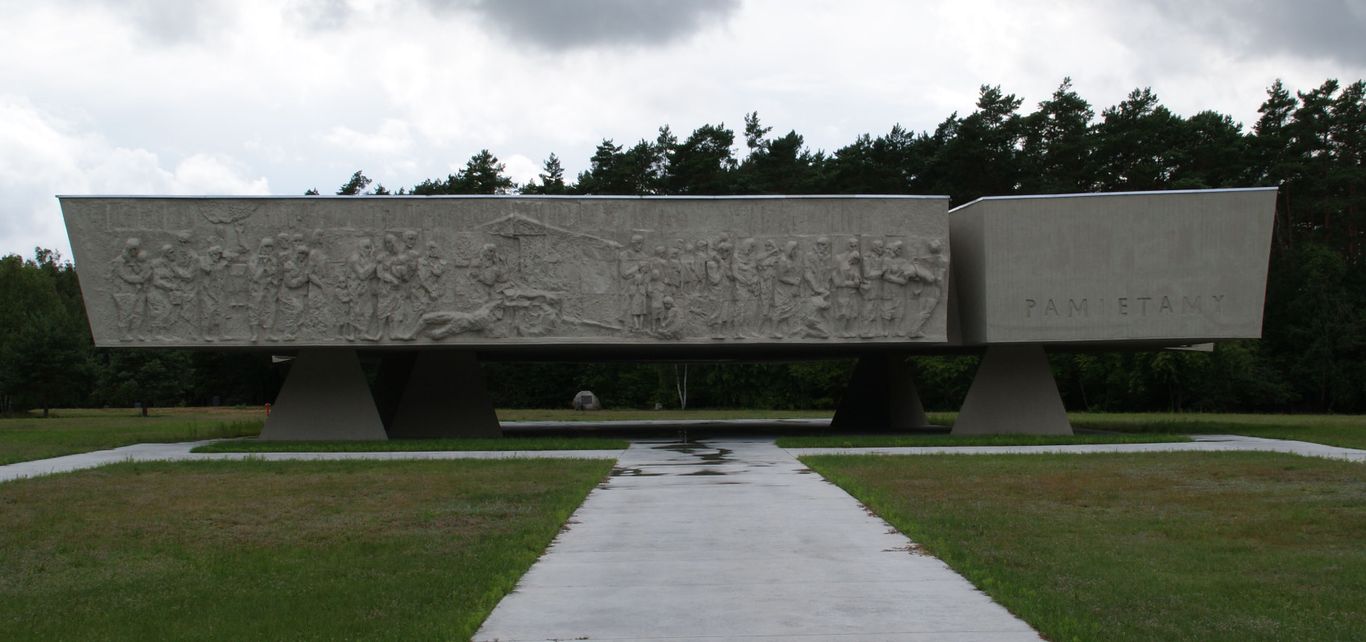
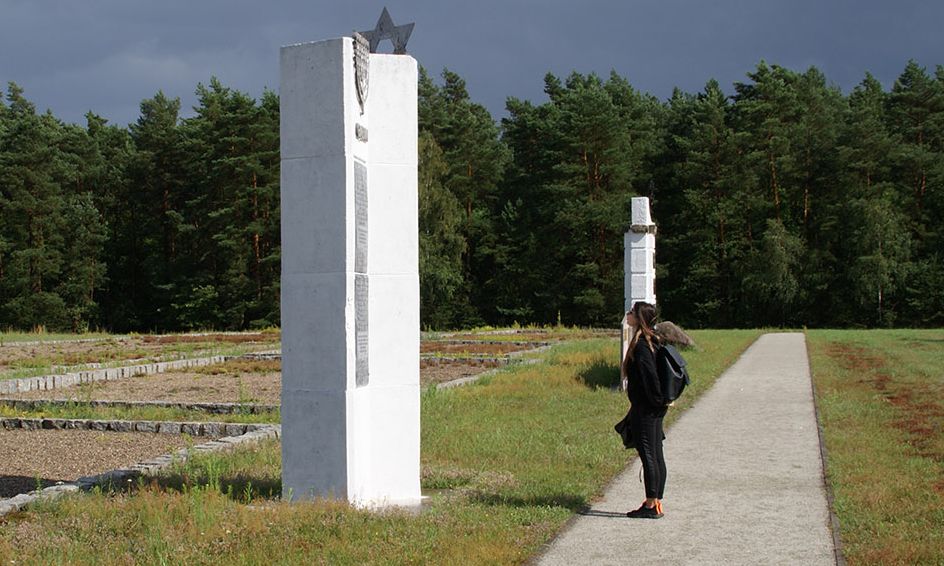
From top to bottom:
Former corpse pit - grave monument for the murdered - Katarzyna in front of a memorial stele.
Combustion
In the summer of 1942, the decomposition process accelerates.
Gas and liquids find their way to the surface. In some places the earth rises by almost 2 meters.
A sweet smell of decay hangs over the forest and is carried by the wind through the countryside.
The Germans have the bodies exhumed and burned on site in crematories.
Bone fragments are ground up, the fine flour is collected in sacks that emptied into a nearby river.
Our minds resist understanding. And yet this is how Sybil ended.
"She moves with an unaffected grace that secures her the sympathy of the audience from her first appearance on the screen. I am of the opinion that Mr. Reinert has made a new discovery here."
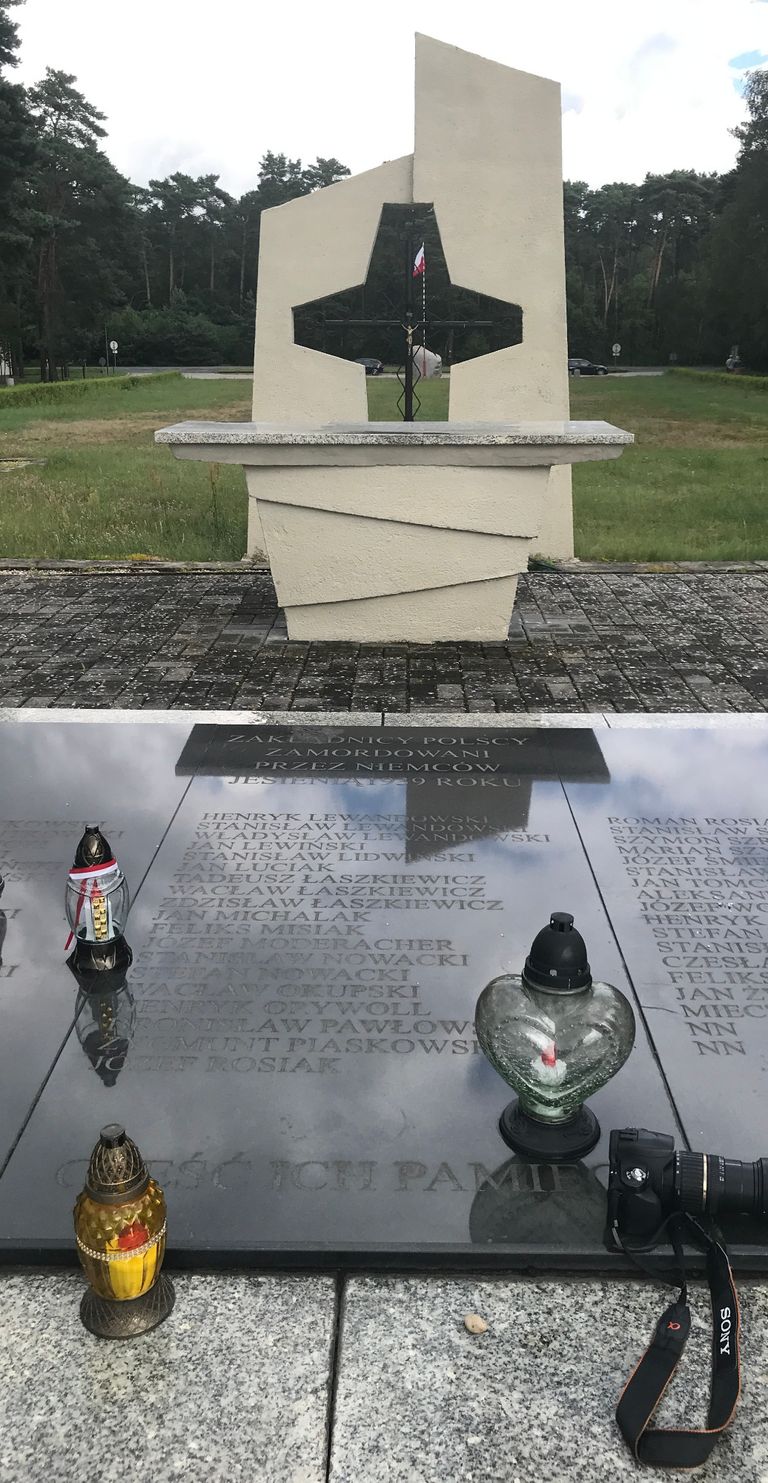
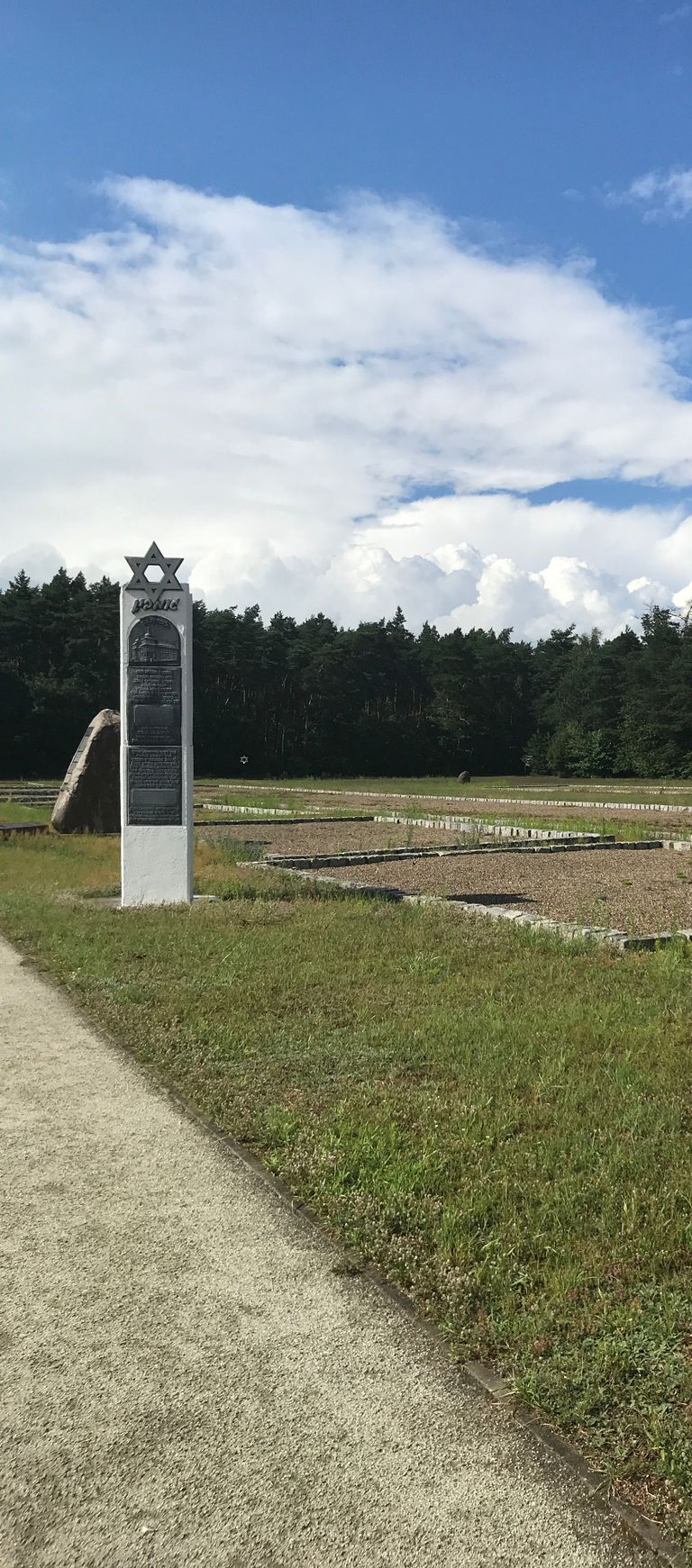
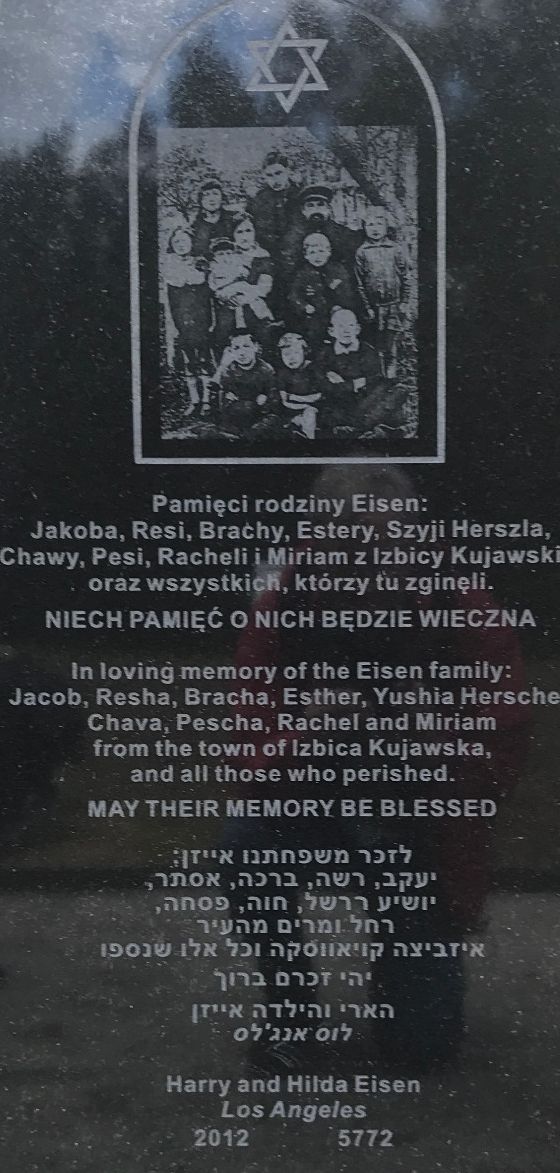
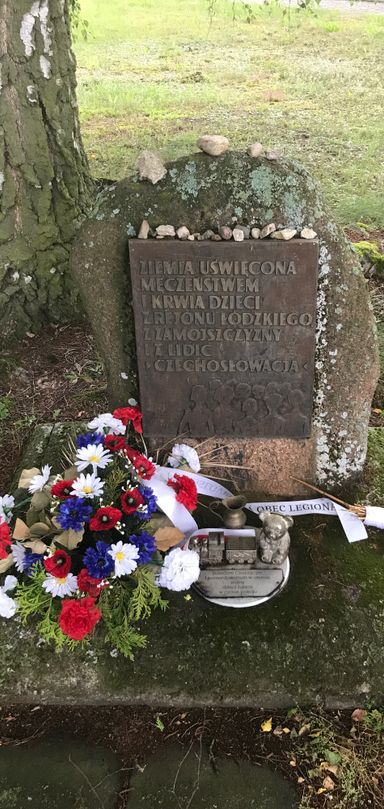

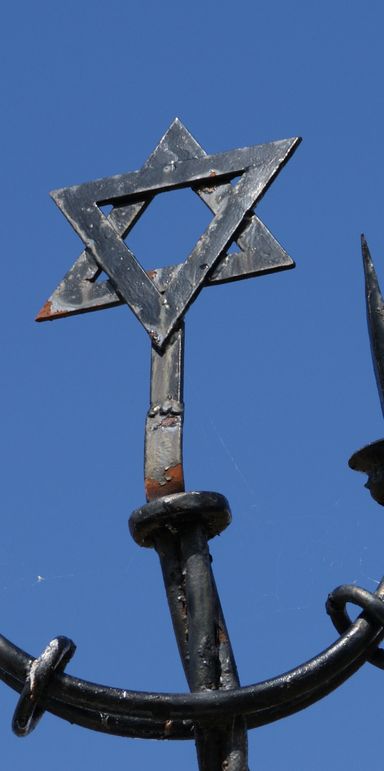
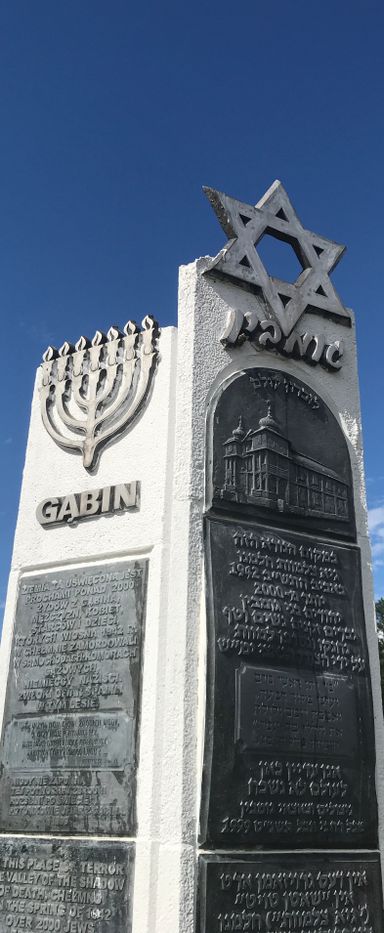
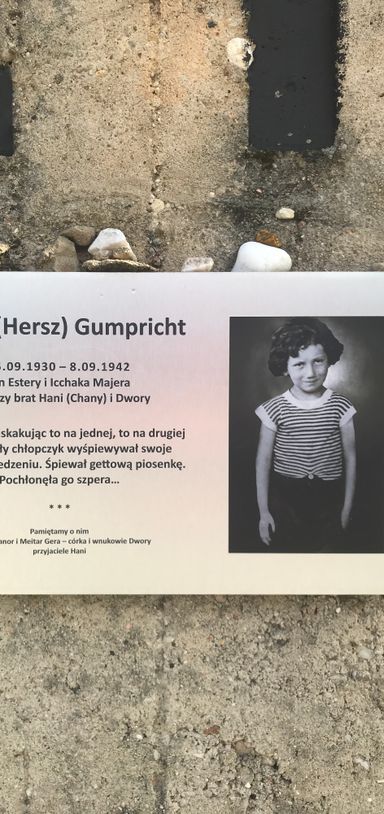
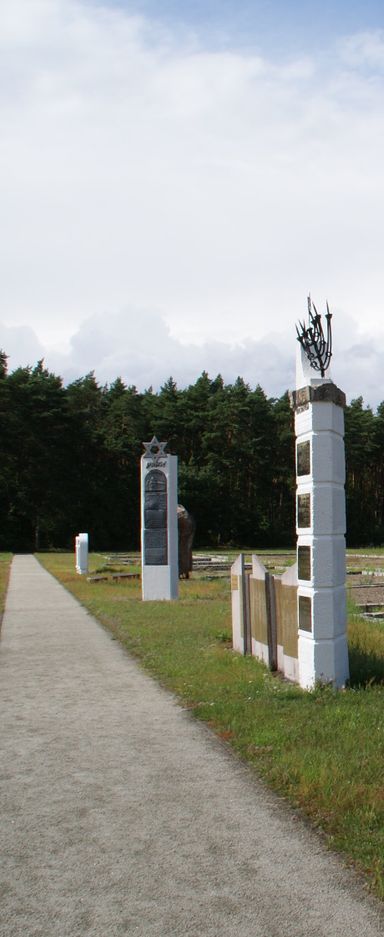
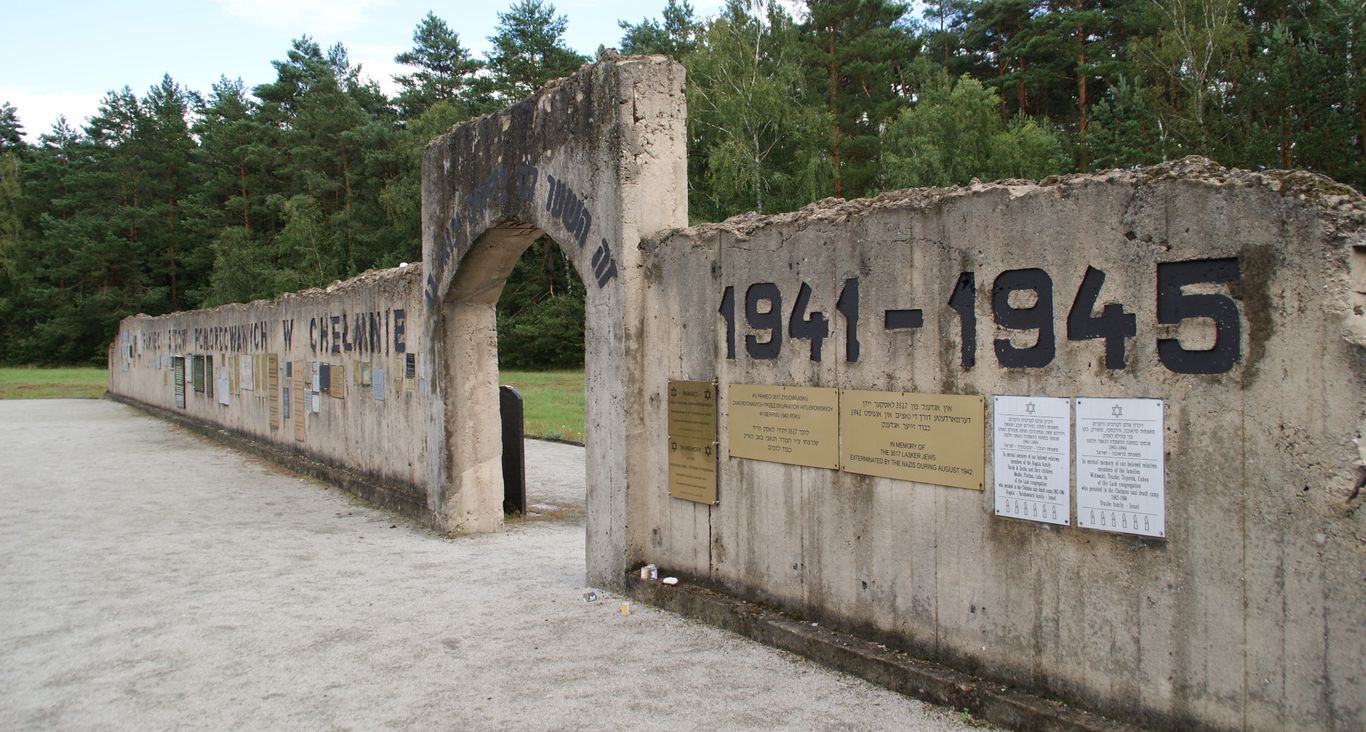
Wall with memorial plaques for relatives who were murdered in Chelmno. Sybil should also receive her plaque here!
07-17-22: Journey home
July 2024: Memorial plaque for Sybil installed!
The memorial plaque for Sybil and her mother Adelheid was installed almost exactly 2 years after our visit to the memorial site in Rzuchów Forest.
My first design did not meet the state requirements for memorials and monuments, so I had to make extensive changes to it. I was all the more delighted when I received the news that the second version had successfully passed through the courts.
I would like to thank Mr. Bartłomiej Grzanka, the director of the museum in Chełmno, for his active support - and of course Katarzyna, who helped me with the translation of the official letters when DeepL failed because of the official Polish.
May Sybil and Adelheid rest in peace and may the plaque remind visitors of their lives!
Only the forgotten are dead!
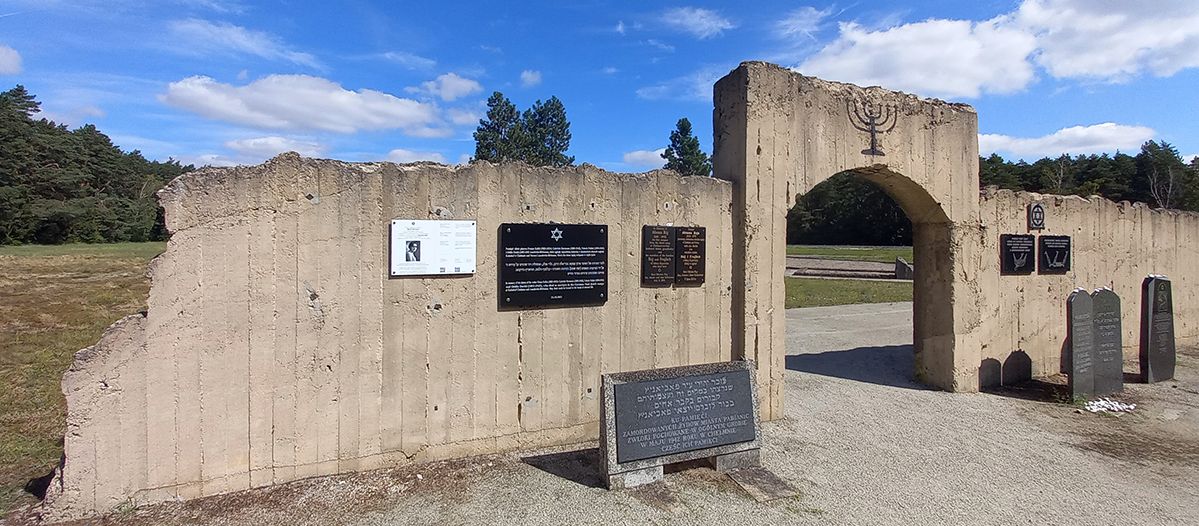
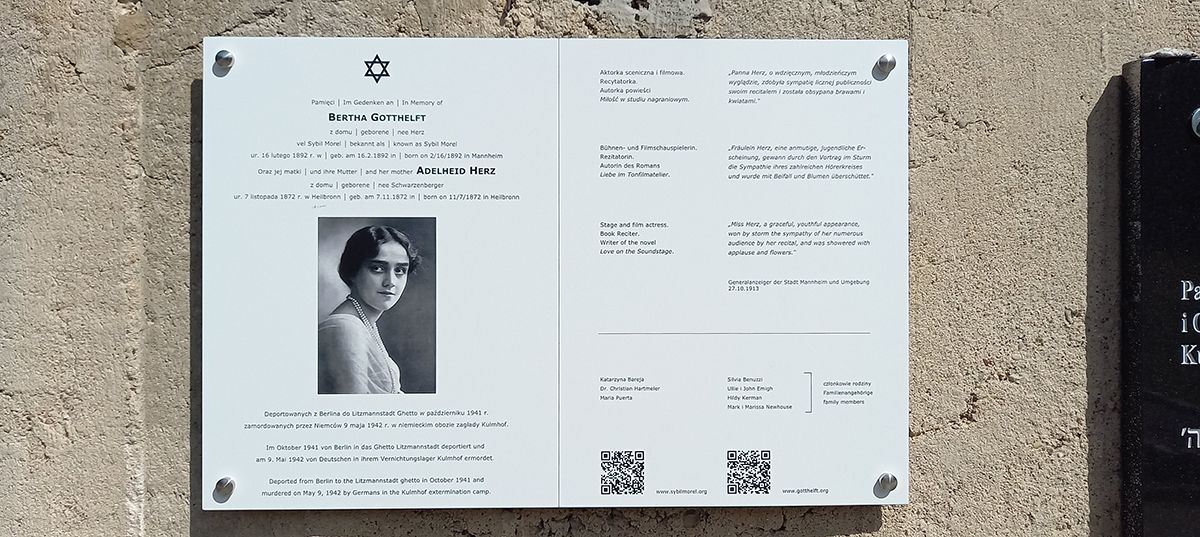
Wir benötigen Ihre Zustimmung zum Laden der Übersetzungen
Wir nutzen einen Drittanbieter-Service, um den Inhalt der Website zu übersetzen, der möglicherweise Daten über Ihre Aktivitäten sammelt. Bitte überprüfen Sie die Details in der Datenschutzerklärung und akzeptieren Sie den Dienst, um die Übersetzungen zu sehen.
